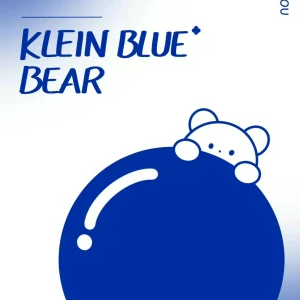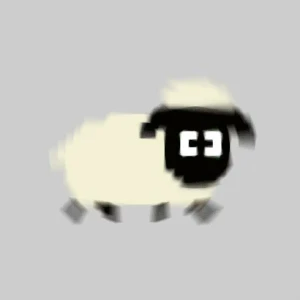先生用英语如何写
1、先生用英文的写法是:mister。2、Mister=先生,因此Mr是先生的英文简称。Mr.:n.先生。mister:n.先生(Mr的全写,不常用);:孩子常用,称呼不知姓名的男子)先生。3、Mr是Mister(先生)的缩写,适用于所有男性(不论婚否)或姓名。Mr有复数形式,称为Messrs(/dmesz/),也就是“各位先生”的意思。比方说,我们叫史密斯先生,也可以叫作MrSmith,如果多人都叫Messrs,比如MessrsSmith、GreenandJonesSmith先生、格林先生和琼斯先生。Mrs是Mistress的缩写,只能用来称呼已婚妇女,是“夫人、太太”的意思,而且在一般情况下接的是已婚妇女丈夫的姓或姓名。Mrs还有一个被称为Mesdames的复数形式(/smytes),可以缩写为Mmes。复数的特定用法与刚才提到的Mr的用法相同。 meira2023-08-07 09:10:571
meira2023-08-07 09:10:571
英语近义词有哪些?
英语反义词big(大的)-----small(小的)bad(坏的)-----good(好的)bright(明亮的)-----dark(黑暗的)black(黑的)-----white(白的)beautiful(美的)-----ugly(丑的)cold(冷的)-----hot(热的)cool(凉爽的)-----warm(温暖的)come(来)-----go(去)cry(哭)-----laugh(笑)clever(聪明的)-----stupid(笨的)different(不同的)-----same(相同的)difficult(难的)-----easy(容易的)dirty(脏的)-----clean(干净的)day(白天)-----night(夜晚)early(早的)-----late(迟的)fast(快的)-----slow(慢的)glad(高兴的)-----sad(悲伤的)inside(里面的)-----outside(外面的)in(里面)-----out(外面)large(大的)-----little(小的)left(左)-----right(右)quiet(安静的)-----noisy(吵闹的)new(新的)-----old(旧的)loose(松的)-----tight(紧的)like(喜欢)-----hate(厌恶)open(开)-----close(关)quick(快的)-----slow(慢的)stand(站)-----sit(坐)short(矮的)-----tall(高的)short(短的)-----long(长的)thick(厚的)-----thin(薄的)thin(瘦的)-----fat(肥的)up(向上)------down(向下)wrong(错的)-----right(对的)weak(弱的)-----strong(强壮的)young(年轻的)-----old(年老近义词toilet—WClisten—hearclass—lessoneveryone—everybodyglass—cuplarge—bigglad—happylike—lovelittle—smallphoto—picturepurse—walletstart—beginhome—houselearn—studybeautiful—prettyusually—oftenlook—seecycle—bikenear—besidehi—helloquick—fastgarden—parkdesk—tablespeak—say—talkriver—lakegohome—comehomeamomentago—justnowalotof—lotsof—manybegoodat—dowellinofcourse—surebefrom—comefromtakeawalk—goforawalktakeabus—bybuswouldlike—wantlookfor—find gitcloud2023-08-07 09:10:571
gitcloud2023-08-07 09:10:571
保护动物英语.手抄报要少点
The eIePhant isbig Zoo LuckySXyd2023-08-07 09:10:556
LuckySXyd2023-08-07 09:10:556
红,黄,蓝,绿,青,紫,橙,黑,白色这九种颜色的英语是怎样写?
red, yellow, blue, green, indigo, purple, orange, black, white 苏州马小云2023-08-07 09:10:552
苏州马小云2023-08-07 09:10:552
用big,bamboo,zoo,popular,acte,写一篇关于熊猫的英语作文
yesterday i saw the panada in the zoo .The giant panda is big body and it eat bamboo .Like wearing a black and white coat. Triangular ears black eyes like wearing big sunglasses like. A nose like a piece of cake. There are the following dark chocolate with white cream. I want to eat. Small mouth under the nose seems to be together. Its limbs like hairy black columns. Its claws can easily put the bamboo catch his tail like a black wool ball. Adorable. Panda is also called "bamboo panda". But now the quality of bamboo is less and less difficult to feed the pandas, so, the panda has become acte. Therefore, the panda is our national treasure and popular, we should protect it. 可桃可挑2023-08-07 09:10:551
可桃可挑2023-08-07 09:10:551
青英语怎么写?
什么是青英语,能不能解释下 Jm-R2023-08-07 09:10:556
Jm-R2023-08-07 09:10:556
困难的用英语怎样说它的近义词和反义词是什么
difficult英音 [ "difiku0259lt ] ; 美音 [ "difiku0259lt ] adj.1.困难的,艰难的,不容易的2.难懂的,难以理解的3.不易相处的,不随和的词形变化:副词:difficultly。同义词:hard;unmanageable。反义词:easy;manageable。 FinCloud2023-08-07 09:10:541
FinCloud2023-08-07 09:10:541
困难的同义词用英语怎么说
startdifficultproblem困难近义词:困穷,困苦,坚苦,清贫,疾苦,穷困,穷苦,艰巨,艰苦,艰难,贫穷,贫苦,障碍,麻烦,挫折来自百度汉语|报错困难_百度汉语[拼音][kùnnan][释义]1.处境艰难2.生活穷困 可桃可挑2023-08-07 09:10:531
可桃可挑2023-08-07 09:10:531
旅行的英语作文
Write your own responses to the questions in Task 1. You can referto (参考) the answers in Task 1.a Why did you choose your major? b Apart from studies, what else do you do in college? c How did you feel on your first day? d Who inspires you most? 小白2023-08-07 09:10:532
小白2023-08-07 09:10:532
英语发音什么时候失去爆破?
b p 两个音 水元素sl2023-08-07 09:10:522
水元素sl2023-08-07 09:10:522
用初一的英语水平如何介绍深圳动物园
不好意思我不认识深圳动物园 尽量写简单点吧 韦斯特兰2023-08-07 09:10:523
韦斯特兰2023-08-07 09:10:523
英语颜色的词有哪些?
red(红), white(白),black(黑),green(绿),yellow(黄),blue(蓝),purple(紫),gray(灰),brown(棕),tan(褐色),syan(青色) 这才叫全palegoldenrod 苍麒麟色 palegreen 苍绿色 paleturquoise 苍绿色 palevioletred 苍紫罗蓝色 pansy 紫罗兰色 papayawhip 番木色 peachpuff 桃色 peru 秘鲁色 pink 粉红 plum 杨李色 powderblue 粉蓝色 purple 紫色 red 红色 rosybrown 褐玫瑰红 royalblue 宝蓝色 rubine 宝石红 saddlebrown 重褐色 salmon 鲜肉色 salmon pink 橙红色 sandy beige 浅褐色 sandybrown 沙褐色 sapphire 宝石蓝 scarlet 猩红色 seagreen 海绿色 seashell 海贝色 shocking pink 鲜粉红色 sienna 赭色 silver 银白色 skyblue 天蓝色 slateblue 石蓝色 slategray 灰石色 smoky gray 烟灰色 snow 雪白色 springgreen 春绿色 steelblue 钢蓝色 stone 石色 tan 茶色 teal 水鸭色 thistle 蓟色 tomato 番茄色 turquoise 青绿色 turquoise blue 翠蓝色 violet 紫色 wheat 浅黄色 white 白色 whitesmoke 烟白色 winered 葡萄酒红 yellow 黄色 yellowgreen 黄绿色 与英文颜色相对应的中文(tianshuichina) beige 米色 black 黑色 brown 咖啡色 cream 雪白 khaki 卡其色 grey 灰色 navy 丈青色 offwhite 灰白色 palegoldenrod 苍麒麟色 palegreen 苍绿色 paleturquoise 苍绿色 palevioletred 苍紫罗蓝色 pansy 紫罗兰色 papayawhip 番木色 peachpuff 桃色 peru 秘鲁色 pink 粉红 plum 杨李色 powderblue 粉蓝色 purple 紫色 red 红色 rosybrown 褐玫瑰红 royalblue 宝蓝色 rubine 宝石红 saddlebrown 重褐色 salmon 鲜肉色 salmon pink 橙红色 sandy beige 浅褐色 sandybrown 沙褐色 sapphire 宝石蓝 scarlet 猩红色 seagreen 海绿色 seashell 海贝色 shocking pink 鲜粉红色 sienna 赭色 silver 银白色 skyblue 天蓝色 slateblue 石蓝色 slategray 灰石色 smoky gray 烟灰色 snow 雪白色 springgreen 春绿色 steelblue 钢蓝色 stone 石色 tan 茶色 teal 水鸭色 thistle 蓟色 tomato 番茄色 turquoise 青绿色 turquoise blue 翠蓝色 violet 紫色 wheat 浅黄色 white 白色 wheat 土黄色 whitesmoke 烟白色 winered 葡萄酒红 yellow 黄色 yellowgreen 黄绿色 左迁2023-08-07 09:10:501
左迁2023-08-07 09:10:501
用英语介绍动物园怎样用英语说
This is a very big zoo. There are many animals here. Look at the monkeys. They are climbing trees.Pandas are eating bamboo leaves . Look at the elephant. He"s drinking water. And the rabbits are playing. There are three tigers, and they are sleeping. mlhxueli
2023-08-07 09:10:501
mlhxueli
2023-08-07 09:10:501
我在的城市有一个大动物园,用英语什么说
There is a zoo in my city LuckySXyd2023-08-07 09:10:505
LuckySXyd2023-08-07 09:10:505
我家附近有一个很大的动物园用英语怎么写uff841uffa46
There is a big zoo near my home. 我家附近有一个很大的动物园。 北有云溪2023-08-07 09:10:491
北有云溪2023-08-07 09:10:491
外研版小学英语三年级(一年级起)上册教案
┏┛┻━━━┛┻┓┃|||||||┃┃ ━ ┃┃ ┳┛ ┗┳ ┃ 围观是一种态度┃ ┃┃ ┻ ┃┃ ┃ 围观是为了提高知名度┗━┓ ┏━┛ ┃ ┃ ┃ ┃ ┃ ┃ ┃ ┃ ┃ ┗━━━┓ ┃你妹与我同在 ┣┓ ┃围观专用宠物 ┃ ┗┓┓┏━┳┓┏┛ ┃┫┫ ┃┫┫ ┗┻┛ ┗┻┛ 瑞瑞爱吃桃2023-08-07 09:10:482
瑞瑞爱吃桃2023-08-07 09:10:482
写一篇关于对英语期末总结的作文,(就是写自己对期末的期望与行动),250字足矣 给100分
第一篇:In the final test, i hope i can to be better than before, at least, the progress, i believe that : lost it is determination. this is bound not to flunk. can i encourage第二篇:Is the final exam, actually i am most concerned about is my english, i hope this will try to do well, at least there will be a little improvement. man, can"t always on the origin, believe me : i"ll do my best to go to meet the examination, i would like to encourage! 小白2023-08-07 09:10:483
小白2023-08-07 09:10:483
what color is it?的英语说课稿
Points Teaching Materials Computer software, tape recorder, video, color card, a yellow sweater and a red one, a big umbrella and two small ones, two pieces of garment and two colorful candies Teaching Process Time Material Organizing the class Listen and sing a song: “Who is wearing yellow today?” Warm up and attract the pupils One minute Tape recorder Lead in the new class The teacher named three pupils dressed in yellow to introduce the word “ Yellow” To introduce the new words by songs Study of new text Study the words “green, black, purple”. according to the song and the garment the pupils wear The teacher uses “ Is u2026 wearing yellow/u2026 today?” The teacher sorts out the color cards to help the pupils to read the words Some pupils have known the words. Provide an opportunity of acknowledgment for all levels of pupils A visual method to help to pupils to remember the words 8-9 Practice the four words: yellow, green, black, purple, and study the new word color. Study brown, white, red, blue. (pupils teach each other) Mutual aid and cooperation among teachers and students Study the sentence pattern “I like the color” The teacher sorts out his/her favorite color and puts it on his/her dress to help the pupils to understand the meaning of “I like the color.” The pupils sort out the colors they like, saying “I like the color.” Emphasize the word “like” by body language The pupils overcome the difficulties by practicing Study the sentence pattern “What color is it?” and try to use the sentence pattern Read the words of color in the umbrella teamwork, divide the pupils into seven sections, the pupils put the words with the corresponding color cards. Practice the sentence pattern: “What color is it? Itu2019su2026” in the game Group game, practice the sentence pattern “What color is it? Itu2019s u2026” The whole class is divided into seven groups, the teacher provide the materials and let students to practice the sentences by feeling and touch.. Form the ability to grasp new word. Mutual aids and cooperation among pupils Connect the words with their meanings Active the pupilsu2019 interest. Teamwork and inter-group cooperation active the whole class. Study the text Watch the video twice The questions after the first time: 1. How many girls are there in the dialogue? 2.What are they talking about? Focus on the word sweater. -Is it a new sweater? To let the pupils understand the text in a real language context., and provide some practice to improve the listening, teach the new word: Yellow sweater -Yes. -This is Lucyu2019s sweater. -I have a new sweater, too. -What colour is my sweater? Guess! (take out the sweater) -Red. Itu2019s very nice. 3.What color is the sweater? Listen the tape twice. Focus on the key words: look at, open the book at page 37, read the text aloud. The pupils read by themselves. The second time guided by the teacher The third time all the class read aloud together sweater. Let the pupils to form a good habit by practicing. Practicing Practicing the text To read the text by role, give flowers of different colors to the pupils, practice five to six groups.. Practice the sentence pattern “What color is it? Itu2019s u2026”. Review the materials in the software, the pupils read after it.. The teacher gives three language contexts on the basis of which the pupils make dialoguesu3002 小菜G的建站之路2023-08-07 09:10:481
小菜G的建站之路2023-08-07 09:10:481
能帮忙提供下初中英语教师资格证面试试讲的各课型试讲模板吗?
你的能分享下么U0001f602 ardim2023-08-07 09:10:472
ardim2023-08-07 09:10:472
小学英语全英说课稿
小学英语全英说课稿模板 导语:激发和培养学生学习英语的"兴趣,使学生树立自信心,养成良好的学习习惯和形成有效的学习策略,下面是我给大家整理的小学英语全英说课稿模板,希望能给你带来帮助! Good morning, everyone! Today, I"ll say something about Unit 9 Part A in Book 4 of Oxford English. Background on the reformation of curriculum, this book can connect the life and act, emphasize the interest and experience of the Ss, the pictures are active and vivid. Grade four is the initial stage of English learning, so it stresses on the emotion of the Ss, creates a well beginning for the Ss. This Unit has 7 parts, we"ll learn Part A mainly, it embodies the repeating characterize. Review the learned language points “Where"s…”and the new language points will be represented in the following units. So this unit forms connecting links with a special meaning in this book. The content of this period is to use “Where"sare…” to determine the place. And according to the contents and the fact of the Ss, I establish the following three teaching aims of this period: The first one: students can listen, read, say and spell the following words: a glass, a fridge, an egg, bread and a table. The second one: students can listen, read, say and write the following daily expressions: What"s for breakfast? Have some juice then. The third one: students can listen, read, say and write the following sentence patterns: Where"sWhere are themy… It"s They"re… There"s no …in on ear… I think the most difficult point of this period is to make sure the students can use the patterns “Where"sWhere are…and There is no …inon ear…” in their daily life correctly. And I will use some pictures, words and sentence cards, a tape recorder and the multi-media computer to help me achieve the aims. The task-based method, communicated method, group cooperate method will be used in this period. To accomplish the aims, I design the following steps: Step 1 Songs and the game arousers the emotion. In order to attract the Ss" attention and construct an atmosphere of learning English, I let the students sing some English songs and play the game “Simon says”. At the same time the game can review the prep, serve the knowledge as foil and consist the appearance of the knowledge. Step 2 Change class to life, happy to say. The substance of language is communication and the environment of communication is life. So when I present the sentence pattern “What"s for breakfast?” I first show a clock to elicit the time for breakfast, teach the sentence. Then show my own photo of having breakfast, Ss ask and guess. In this way I can attract Ss" attention, encourage Ss to ask Qs with the new knowledge. Most of the Ss have learnt the sentence pattern: Where"s…? so I design a task for Ss to help Helen find the food and drinks for breakfast, and teach the new language points: Where are…? They"re … Meanwhile stick the sentences on the Bb. After some practice by asking and answering, I present the next language points: There"s no …inon ear… Have …then. And I will stick these sentence patterns on the Bb. Finally I"ll let the Ss do pair works to consolidate them. Step 3 Listen to the tape and Ss imitate to read and say. As the new reformation of curriculum, emphasized the traditional class attach importance to the mechanical teaching, neglect the experience and participation, for example, the five-step method. So in this lesson, after presentation, I ask Ss to listen to the tape with three Qs, read in different roles and in pairs, then try to recite the text. Step 4 Ss be the main body, T makes a guider. In class, Ss play as a host, and the T makes an influence on guiding, help Ss to act the learnt dialogue, it can stress the position of the Ss, and arouse their interest. Then I show a carton with no voice, ask Ss to make a dialogue in pairs. There are lots of ways to consolidate the new knowledge. Playing game is a good way. So according to the physiology of Ss, I hold a group competition during the game, ask Ss to finish the blanks. In this way can develop Ss" good habits and achieve the aim of mastering the learned knowledge in situation. Step 5 Change class to life, learn by themselves. Is this the end of the class? I don"t think so. If there is an end, I think it should be in the life. So I extend this class, encourage Ss to use the learned to communicate with each other in their life. In a word, the whole period is based on tasks, which are designed from easy steps to steps that are challenging. When the Ss are carting out the tasks, they can acquire information, knowledge, and have their ability and skills trained. That"s all. Thanks a lot for your attention. ; mlhxueli
2023-08-07 09:10:471
mlhxueli
2023-08-07 09:10:471
英语颜色单词怎么写
color希望你们能不能帮助你 康康map2023-08-07 09:10:463
康康map2023-08-07 09:10:463
幼儿园中班教案英语(clup you hands拍你的小手),怎么写?
是clap your hands Jm-R2023-08-07 09:10:463
Jm-R2023-08-07 09:10:463
求:牛津小学英语全英文说课稿
Good morning, everyone! Today, I"ll say something about Unit 9 Part A in Book 4 of Oxford English. Background on the reformation of curriculum, this book can connect the life and act, emphasize the interest and experience of the Ss, the pictures are active and vivid. Grade four is the initial stage of English learning, so it stresses on the emotion of the Ss, creates a well beginning for the Ss. This Unit has 7 parts, we"ll learn Part A mainly, it embodies the repeating characterize. Review the learned language points “Where"s…”and the new language points will be represented in the following units. So this unit forms connecting links with a special meaning in this book. The content of this period is to use “Where"sare…” to determine the place. And according to the contents and the fact of the Ss, I establish the following three teaching aims of this period: The first one: students can listen, read, say and spell the following words: a glass, a fridge, an egg, bread and a table. The second one: students can listen, read, say and write the following daily expressions: What"s for breakfast? Have some juice then. The third one: students can listen, read, say and write the following sentence patterns: Where"sWhere are themy… It"s They"re… There"s no …in on ear… I think the most difficult point of this period is to make sure the students can use the patterns “Where"sWhere are…and There is no …inon ear…” in their daily life correctly. And I will use some pictures, words and sentence cards, a tape recorder and the multi-media computer to help me achieve the aims. The task-based method, communicated method, group cooperate method will be used in this period. To accomplish the aims, I design the following steps: Step 1 Songs and the game arousers the emotion. In order to attract the Ss" attention and construct an atmosphere of learning English, I let the students sing some English songs and play the game “Simon says”. At the same time the game can review the prep, serve the knowledge as foil and consist the appearance of the knowledge. Step 2 Change class to life, happy to say. The substance of language is communication and the environment of communication is life. So when I present the sentence pattern “What"s for breakfast?” I first show a clock to elicit the time for breakfast, teach the sentence. Then show my own photo of having breakfast, Ss ask and guess. In this way I can attract Ss" attention, encourage Ss to ask Qs with the new knowledge. Most of the Ss have learnt the sentence pattern: Where"s…? so I design a task for Ss to help Helen find the food and drinks for breakfast, and teach the new language points: Where are…? They"re … Meanwhile stick the sentences on the Bb. After some practice by asking and answering, I present the next language points: There"s no …inon ear… Have …then. And I will stick these sentence patterns on the Bb. Finally I"ll let the Ss do pair works to consolidate them. Step 3 Listen to the tape and Ss imitate to read and say. As the new reformation of curriculum, emphasized the traditional class attach importance to the mechanical teaching, neglect the experience and participation, for example, the five-step method. So in this lesson, after presentation, I ask Ss to listen to the tape with three Qs, read in different roles and in pairs, then try to recite the text. Step 4 Ss be the main body, T makes a guider. In class, Ss play as a host, and the T makes an influence on guiding, help Ss to act the learnt dialogue, it can stress the position of the Ss, and arouse their interest. Then I show a carton with no voice, ask Ss to make a dialogue in pairs. There are lots of ways to consolidate the new knowledge. Playing game is a good way. So according to the physiology of Ss, I hold a group competition during the game, ask Ss to finish the blanks. In this way can develop Ss" good habits and achieve the aim of mastering the learned knowledge in situation. Step 5 Change class to life, learn by themselves. Is this the end of the class? I don"t think so. If there is an end, I think it should be in the life. So I extend this class, encourage Ss to use the learned to communicate with each other in their life. In a word, the whole period is based on tasks, which are designed from easy steps to steps that are challenging. When the Ss are carting out the tasks, they can acquire information, knowledge, and have their ability and skills trained. That"s all. Thanks a lot for your attention.先说Class begins,good morning/afternoon boys and girls. 再说Do you know xxx?It"s xxx(adj).Open your book and turn to page xxx,today we"ll learn something about it/them. Good morning, everyone! Today, I"ll say something about Unit 9 Part A in Book 4 of Oxford English. Background on the reformation of curriculum, this book can connect the life and act, emphasize the interest and experience of the Ss, the pictures are active and vivid. Grade four is the initial stage of English learning, so it stresses on the emotion of the Ss, creates a well beginning for the Ss. This Unit has 7 parts, we"ll learn Part A mainly, it embodies the repeating characterize. Review the learned language points “Where"s…”and the new language points will be represented in the following units. So this unit forms connecting links with a special meaning in this book. The content of this period is to use “Where"sare…” to determine the place. And according to the contents and the fact of the Ss, I establish the following three teaching aims of this period: The first one: students can listen, read, say and spell the following words: a glass, a fridge, an egg, bread and a table. The second one: students can listen, read, say and write the following daily expressions: What"s for breakfast? Have some juice then. The third one: students can listen, read, say and write the following sentence patterns: Where"sWhere are themy… It"s They"re… There"s no …in on ear… I think the most difficult point of this period is to make sure the students can use the patterns “Where"sWhere are…and There is no …inon ear…” in their daily life correctly. And I will use some pictures, words and sentence cards, a tape recorder and the multi-media computer to help me achieve the aims. The task-based method, communicated method, group cooperate method will be used in this period. To accomplish the aims, I design the following steps: Step 1 Songs and the game arousers the emotion. In order to attract the Ss" attention and construct an atmosphere of learning English, I let the students sing some English songs and play the game “Simon says”. At the same time the game can review the prep, serve the knowledge as foil and consist the appearance of the knowledge. Step 2 Change class to life, happy to say. The substance of language is communication and the environment of communication is life. So when I present the sentence pattern “What"s for breakfast?” I first show a clock to elicit the time for breakfast, teach the sentence. Then show my own photo of having breakfast, Ss ask and guess. In this way I can attract Ss" attention, encourage Ss to ask Qs with the new knowledge. Most of the Ss have learnt the sentence pattern: Where"s…? so I design a task for Ss to help Helen find the food and drinks for breakfast, and teach the new language points: Where are…? They"re … Meanwhile stick the sentences on the Bb. After some practice by asking and answering, I present the next language points: There"s no …inon ear… Have …then. And I will stick these sentence patterns on the Bb. Finally I"ll let the Ss do pair works to consolidate them. Step 3 Listen to the tape and Ss imitate to read and say. As the new reformation of curriculum, emphasized the traditional class attach importance to the mechanical teaching, neglect the experience and participation, for example, the five-step method. So in this lesson, after presentation, I ask Ss to listen to the tape with three Qs, read in different roles and in pairs, then try to recite the text. Step 4 Ss be the main body, T makes a guider. In class, Ss play as a host, and the T makes an influence on guiding, help Ss to act the learnt dialogue, it can stress the position of the Ss, and arouse their interest. Then I show a carton with no voice, ask Ss to make a dialogue in pairs. There are lots of ways to consolidate the new knowledge. Playing game is a good way. So according to the physiology of Ss, I hold a group competition during the game, ask Ss to finish the blanks. In this way can develop Ss" good habits and achieve the aim of mastering the learned knowledge in situation. Step 5 Change class to life, learn by themselves. Is this the end of the class? I don"t think so. If there is an end, I think it should be in the life. So I extend this class, encourage Ss to use the learned to communicate with each other in their life. In a word, the whole period is based on tasks, which are designed from easy steps to steps that are challenging. When the Ss are carting out the tasks, they can acquire information, knowledge, and have their ability and skills trained. That"s all. Thanks a lot for your attention.先说Class begins,good morning/afternoon boys and girls. 再说Do you know xxx?It"s xxx(adj).Open your book and turn to page xxx,today we"ll learn something about it/them. 然后开始讲课就行了 讲课中常用的: Practice in pairs(两人一组练对话) Open your book Close your book Do you have any questions? Look at blackboard. Write down some notes(做笔记) Stand up please. Ok,sit down. Listen to me. Let"splay a game Who wants to have a try?(谁想试一试) 最后Now class is over,see you next time.Thank you.先说Class begins,good morning/afternoon boys and girls. 再说Do you know xxx?It"s xxx(adj).Open your book and turn to page xxx,today we"ll learn something about it/them. 然后开始讲课就行了 讲课中常用的: Practice in pairs(两人一组练对话) Open your book Close your book Do you have any questions? Look at blackboard. Write down some notes(做笔记) Stand up please. Ok,sit down. Listen to me. Let"splay a game Who wants to have a try?(谁想试一试) 最后Now class is over,see you next time.Thank you. 真颛2023-08-07 09:10:461
真颛2023-08-07 09:10:461
“句型掌握的不好”用英语怎么说
i didn"t master well in sentence pattern 黑桃花2023-08-07 09:10:462
黑桃花2023-08-07 09:10:462
小学英语说课稿英文版
小学英语说课稿模板英文版 说课稿是为进行说课准备的文稿,它不同于教案,教案只说“怎样教”,说课稿则重点说清“为什么要这样教”。下面是我整理的小学英语说课稿模板英文版,欢迎大家阅读参考! 小学英语说课稿模板英文版1 First class; teaching suggestion 1 teaching material analysis The Lets talk part of the textbook is a situational conversation where students learn to ask questions and answer questions about where they are, Wheres, Its, in / on / under, and can be used naturally in actual situations.The Lets practise section is part of the Lets talk part of the game, which provides students with an opportunity to actually use the language.In the two part of knowledge and practice, you can listen, say, and recognize the following words: car, plane, desk, chair, bag, in, on, under. 2 teaching suggestions This class is mainly through situational dialogue, so that students learn to ask questions and answer the location of the sentence, so that students understand in a certain situation, will say and understand the sentence Wheres.... Its in / on / under...The teacher asks the students to prepare the stationery class words before class. When they teach the new sentences, they can use the game "hide and seek" to import sentence patterns Wheres... Its in / on / under...On the basis of understanding the new sentence patterns, use the courseware to learn the new dialogue, so as to recognize the words in the class.Finally, once again, through the game, tin and consolidate the content of the Lets talk, the game can be divided into collective and group game game two, and will find stationery extended to find toys or other things around. Second hours teaching suggestion 1 teaching material analysis This session is divided into two sections: Lets, learn, and Lets play.The Lets learn section focuses on teaching a few words that represent transport: bus, bike, jeep, taxi, and a preliminary understanding of the phrase "Look out".Lets play is part of the Lets talk part of the first class, to provide students with an opportunity to use language in real life. 2 teaching suggestions The main lesson to learn several express transport words: bus, bike, jeep, taxi, students of these words have a preliminary understanding, learning again, teachers should design easy to mobilize the students" interest and enthusiasm for learning activities.In the introduction of new classes, the introduction of new lessons with simple strokes, but also the use of real toys to allow students to perceive, to attract students with colorful pictures, with familiar voices to mobilize students.Then use animation courseware to present new knowledge.In the training session, the teacher may design the interesting activity, lets the student consolidate in the play, moves. Third hours teaching suggestion 1 teaching material analysis This session includes two sections: Lets, say and Lets do.The Lets say part is to train students to listen, say, read and write letters Uu, Vv, Ww, and to make the students understand and speak the letters at the beginning of the word "umbrella", "under", "vest", "Violin", "window", "wind".The Lets do section reviews and consolidates the letter "A-W" through rhythmic, rhythmic instructions.And preliminary understanding of the list of action words show, point, type, colour, say, but also for students to provide a basis for language learning.A-T is the teaching content of this book Unit 1 through Unit 4. 2 teaching methods When teaching letters and words, the teacher uses letters, words and actions to present letters and words at the same time, so that students can learn on the basis of understanding the meaning of words.Such as: umbrella, vest, window, can be explained in kind; violin, wind explained by action.(according to students or teachers change the situation) understand the meaning of words, help to express words, more skilled reading words, and then learn letters, to master pronunciation, master letters shape. [Topic] Unit, Five, Where, is, my, ruler? [emphasis on teaching] everyday expressions Where "s...And its" It "s in / on / under.... [teaching difficulties] sentences: Where, is, my, car, In, the, toy, box, understanding [teaching aid preparation] 1 the teacher prepares the tapes for teaching materials. 2 teachers prepare Let s talk part of the courseware. 3 teachers and students are ready for pen, pencil, ruler, eraser, bag and other stationery and car, toy, box, ball, plane, doll and other toys. 4 teachers prepare cards and pictures of the words they learn. 5 students prepare white paper and watercolor pen, ready to draw. 6 students prepare patches for the group. [teaching process] 1 warm up and review (Warm-up/Revision) (1) students practice everyday expressions. (2) games Show, me, the... Teachers or students say words such as "pencil", and teachers and students say Show, me, the, pencils., teachers and students put up pencils.In this way, practice other stationery words in the same way.Teachers and students play games together to improve game effectiveness and communication between teachers and students. (3) the teacher plays the recordings of book Unit, 2, B, part Let, s, chant, and the students listen and clap and chant rhythmically. 小学英语说课稿模板英文版2 1. content of teaching materials This section focuses on festivals and focuses on how people usually spend their holidays.This class requires students to master the National, Day, Halloween, Christmas, Spring, Festival and What do people usually do at of...I?...And free to talk about how to spend the holidays.In this class, did leads to general questions and answers as well as new ones.Because the past tense of the be verb has appeared in the first third units, it is easier for the students to master it when they are studying. 2. status of teaching materials The selected course in this class is English 6A Unit 6 in Oxford primary school.The teaching of this unit revolves around festivals.In this section of the festival, students have the knowledge of the previous third units foreshadowing, relatively easy to depth and expansion.This arrangement reflects not only the progressive meaning of teaching materials, but also the students" knowledge level and cognitive level.On how people spend their holidays, especially in Western festivals,.Students are required to collect information in time after class.In the actual teaching, this class uses the old topic, first teaches the new sentence pattern, and uses the sentence pattern to lead the new knowledge way to unfold, this is advantageous for the student to accept and grasp, also has manifested the teaching content the continuity. Say target: 1. teaching objectives The new curriculum emphasizes the organic combination of knowledge and skills, process and method, emotion, attitude and values, and in the light of this understanding, I set the following teaching objectives: three. [Objective] to students" cognitive spoken phrases and words: visit relatives and friends, go to parties, dress up in costumes, ware masks, make pumping lanterns, eat lots of delicious food, National Day, Christmas, Halloween, Spring, Festival, favourite; can use When"s s...What, do, people, usually, do, at...Did you?....last...Yes, I, did./, No, I, didn, T. and so on. Ability to communicate in English on holidays, and some students can introduce the festival in English fluently. [Objective] through activities and games, students are interested in learning English. Students are encouraged and willing to talk and participate actively in communication.And let students cultivate their sense of cooperation and competition in the process of learning. 2. teaching difficulties The focus of teaching is to let students master the phrase, can use phrases to communicate, the ability of students to use the phrase to describe the preliminary exercise Festival; difficulty is to enable students to understand the temporal changes in richness and realize the use of different phrases to create language. Doctrine of teaching: 1. teaching method design According to the characteristics of this English class itself and the sixth grade students" interest, I through the design of a specific image of the scene, the old with the new, continuous rolling knowledge, in order to disperse the difficulty of teaching, let students perceive and understand.At the same time, the creation of a number of tasks, from words to phrases to sentence to dialogue to pieces, make students practice and meaningful practice in multi exchange between teachers and students in learning, give full play to their enthusiasm, cultivate their ability to learn to use. 2. learning method guidance To guide students through the method of comparison, observation and speculation gradually new language project function, let the students in practice to realize multi-level learning English "use" the necessity, to encourage students to think actively, bold attempt. 3. teaching means According to the teaching content, teaching objectives, students" age characteristics and psychological characteristics, in order to better stimulate students" interest in learning, so as to actively participate in learning.Multimedia courseware, pictures and other teaching aids teaching, the abstract sentence in a vivid scene, the game, not only make the learning process more relaxed, can special case. Say process: 1. warm up (Warm up) (1) announce the way of study in this lesson: group competition.The seats are divided into four teams, each of which is based on the class performance of each student. At the end of the class, WINNER is added.Then, begin "one sentence for each class". The sentences taught in this class are "Lite is long if you know how to use it."" [design intention] the announcement of the study style made the students full of interest in the lesson and aroused their fighting spirit and desire for the group"s performance."One sentence for each class" is an essential part of every class I started in grade six.This section mainly teaches students some clever words and phrases.These sentences not only enrich students" vocabulary, improve their expression ability, but also enable them to learn idiomatic expressions in english.So as to create a good atmosphere for learning english. 2. take the old with the new [lead in] Provide topic Birthday, free communication between teachers and students, and then use the "How do you your birthday spend" to draw the new sentence pattern of this lesson "What do you on your birthday do", and then import "Did you"..."Last birthday?" and answer.Then use the Colour topic to elicit the sentence pattern My favourite.... [design intention] to get rid of new knowledge through old knowledge is one of my frequently used teaching methods.With new students, students can master the sentence patterns more easily.At the same time, combine the new sentences with the old ones.It helps to cultivate students" open thinking ability. ; 墨然殇2023-08-07 09:10:461
墨然殇2023-08-07 09:10:461
句型用英语怎么说 句型用英语如何说
1、句型[jù xíng]:sentential form; sentence pattern.2、双语例句句型练习的重要性是显而易见的。The importance of pattern drills is obvious. 参看第20页(动词句型13)。See page 20 ( verb pattern 13). 她在2001年获得学位。She obtained her degree in2001. 给出了将汉语句型转换成SQL查询语句框架的转换规则以及在此基础上的语义分析技术;And a set of rules for the transformation from Chinese query sentence to corresponding SQL command are presented for semantic analysis. dict.cnki.net介绍和巩固wh?句型的常用语调。To introduce and consolidate common intonation pattern with wh? questions. 铁血嘟嘟2023-08-07 09:10:451
铁血嘟嘟2023-08-07 09:10:451
小学英语全英文说课稿
中国,一个体育强国,是东方之星!每个中国人都为自己的国家自豪,为自己国家的辉煌自豪,更为自己是个中国人自豪!我们想世界证明了我们:中国人并不是“东亚病夫”,而是体育水平达到世界先进的国家的人民,有骨气的中国人!我们想世界证明了:我们都是好样的! 看着日历,转眼就到2008年了,思着想着,又盼望奥运会快点来临!祖国的腾飞,民族的发展,是这次国际盛况的必备要求!而这也正说明:中国强大起来了! 中国人期盼着,海外华人华侨期盼着,世界也正期盼着:中华民族将脱掉“东亚病夫”的帽子,成为东方体育强国! 回想过去:中国人民第一次在世界奥林匹克运动会上比赛,由于准备不足和慌忙参赛,惟一参加比赛的是短跑选手刘长春在100、200米赛跑中接连失利,最终没有获得名次!当中国人听到这不幸时,他们也是无能为力的,因为他们是百姓,是平民,是没有权利职责国民政府的!但是我们不能忘记,我们参加了比赛,我们输得虽然很惨,但是这并不能说明什么!因为2008就在我们眼前! 中国人民已经做好了“战斗准备”,战争一旦打响,中国人民一定会在世界上再次赢得呐喊声!新中国成立后,中国人民按照毛主席的思想,强身健体,积极进行体育锻炼,早以成为体育强国,而中国申奥成功,与中国在世界的地位和体育技能是密不可分的。 中国的骄傲是很多的:1984年洛衫矶奥运会,是中华人民共和国第一次参加奥运会,并且一举实现了“零的突破”获得了15枚金牌。这个成绩震惊了当时的世界!1992年汉城奥运会八塞罗那奥运会,中国获得16枚金牌排名第四。1996年亚特兰大奥运会上,金牌总数均约第四。2000年悉尼奥运会,中国以28枚金牌挤进前三名。2004年雅典奥运会,“亚洲飞人”刘翔在110米跨栏中获得金牌,中国男子田径项目获得零的突破,而且中国在那届奥运会上中国以32枚金牌获得第二名的好成绩! 从这里我们可以看到,中国的体育水平已经达到了过去中国人民不敢想象的地步,也就是从这些记录中,中国人民的到了前所未有的鼓励,鼓励我们中国的运动员不断向前,勇夺金牌,获得真正的“胜利” 2008年北京奥运会有三大理念:绿色奥运、科技奥运、人文奥运 绿色奥运——把环境保护作为奥运设施规划和建设的首要条件,制定严格的生态环境标准和系统的保障制度;广泛采用环保技术和手段,大规模多方位地推进环境治理、城乡绿化美化和环保产业发展;增强全社会的环保意识,鼓励公众自觉选择绿色消费,积极参与各项改善生态环境的活动,大幅度提高首都环境质量,建设宜居城市。 科技奥运——紧密结合国内外科技最新进展,集成全国科技创新成果,举办一届高科技含量的体育盛会;提高北京科技创新能力,推进高新技术成果的产业化和在人民生活中的广泛应用,使北京奥运会成为展示新技术成果和创新实力的窗口。 人文奥运——传播现代奥林匹克思想,展示中华民族的灿烂文化,展现北京历史文化名城风貌和市民的良好精神风貌,推动中外文化的交流,加深各国人民之间的了解与友谊;促进人与自然、个人与社会、人的精神与体魄之间的和谐发展;突出“以人为本”的思想,以运动员为中心,提供优质服务,努力建设使奥运会参与者满意的自然和人文环境。 中国的奥运口号的的含义很明确:努力和收获既是中国的,也是世界的。口号表达了北京人民和中国人民与世界各国人民共有美好家园,同享文明成果,携手共创未来的崇高理想;表达了一个拥有五千年文明,正在大步走向现代化的伟大民族致力于和平发展,社会和谐,人民幸福的坚定信念;表达了13亿中国人民为建立一个和平而更美好的世界做出贡献的心声。 中国的奥运吉祥物是五个娃娃,叫做“福娃”,分别叫“贝贝(北)”“晶晶(京)”“欢欢(欢)”“迎迎(迎)”“妮妮(你)”,是由“北京欢迎你”五个字演变而来的。福娃代表了梦想以及中国人民的渴望。他们的原型和头饰蕴含着其与海洋、森林、火、大地和天空的联系,其形象设计应用了中国传统艺术的表现方式,展现了中国的灿烂文化。 贝贝传递的祝福是繁荣。在中国传统文化艺术中, “鱼” 和 “水” 的图案是繁荣与收获的象征,人们用 “鲤鱼跳龙门”寓意事业有成和梦想的实现,“鱼”还有吉庆有余、年年有余的蕴涵。 贝贝的头部纹饰使用了中国新石器时代的鱼纹图案。贝贝温柔纯洁,是水上运动的高手,和奥林匹克五环中 的蓝环相互辉映。 晶晶是一只憨态可掬的大熊猫,无论走到哪里都会带给人们欢乐。作为中国国宝,大熊猫深得世界人民的喜爱。 晶晶来自广袤的森林,象征着人与自然的和谐共存。他的头部纹饰源自宋瓷上的莲花瓣造型。晶晶憨厚乐观,充满力量,代表奥林匹克五环中黑色的一环。 欢欢是福娃中的大哥哥。他是一个火娃娃,象征奥林匹克圣火。欢欢是运动激情的化身,他将激情散播世 界,传递 更快、更高、更强的奥林匹克精神。欢欢所到之处,洋溢着北京2008对世界的热情。 欢欢的头部纹饰源自敦煌壁画中火焰的纹样。他性格外向奔放,熟稔各项球类运动,代表奥林匹克五环中红 色的一环。 迎迎是一只机敏灵活、驰骋如飞的藏羚羊,他来自中国辽阔的西部大地,将健康的美好祝福传向世界。迎迎是青藏高原特有的保护动物藏羚羊,是绿色奥运的展现。 妮妮来自天空,是一只展翅飞翔的燕子,其造型创意来自北京传统的沙燕风筝。“燕”还代表燕京(古代北京的称谓)。妮妮把春天和喜悦带给人们,飞过之处播撒“祝您好运”的美好祝福。 天真无邪、欢快矫捷的妮妮将在体操比赛中闪亮登场,她代表奥林匹克五环中绿色的一环。 中国,一个体育强国,是东方之星!每个中国人都为自己的国家自豪,为自己国家的辉煌自豪,更为自己是个中国人自豪!我们想世界证明了我们:中国人并不是“东亚病夫”,而是体育水平达到世界先进的国家的人民,有骨气的中国人!我们想世界证明了:我们都是好样的! 九万里风9
2023-08-07 09:10:4512
九万里风9
2023-08-07 09:10:4512
急!急!急!高分求短小精悍的英语事例!
I realized that I wasn"t succeeded in finishing my task until I did it for the tenth time when I was young.So I would tell myself to spend ten times more efforts to do it. by Bernard Shaw 此后故乡只2023-08-07 09:10:4412
此后故乡只2023-08-07 09:10:4412
有关颜色的英语单词
颜色英文单词是colour。1. red红色2. silver 银3. sand 沙子色4. gold金5. yellow 黄色6. black黑色7. olive橄榄色8. pink粉红色9. anti gold 古铜色10. natural 自然色11. gunmetal 青铜色12. stone浅橄榄灰色13. D/melange 米灰色 拌三丝2023-08-07 09:10:442
拌三丝2023-08-07 09:10:442
我与电脑的故事 英语作文 急!!!!
The winter vacation, I have a computer, also apply for admission. Therefore, I in the first computer at the same time to network the indissoluble bound. Increasing with time, the network has been integrated into my life, or say, I have been integrated into the vast world of INTERNET.The first time I surf the Internet, thought it was a very strange world, in the information highway has a certain sea, plain horse quickly cool the magnificent (slightly exaggerated a bit, I"m sorry! Point) and under the "IE" icon, listen to the 56K "cat" chattering call, then input the "open sesame" username and password, suddenly found that the world"s slow things not snail, tortoise, nor what sea cucumber, sloth, and it is a browser window that root like death non dead blue line.Sitting at the table 5 minutes, make I irascible, fidgety. Jump out of the window is not my imagination of so wonderful, magnificent, with the exception of a few links, seems to be nothing. Although there are news, entertainment, but I expected INTERNET far. Not much, they have lost all interest in sth. finally in the famous INTERNET "bye bye". In the network meet for the first time as met a silly girl ", it is strongly! I was really surprised: greatly disappoint one"s hopes on such a thing, is also known as the information technology revolution!Even so, the very next day I was sitting in front of the computer, and a "climb" so-called "highway". This time, I entered a few links, found the vision suddenly open a lot of. The "inside" hidden but beautiful spot; I in the game a found "StarCraft" intensive; sometimes the news throughout the world events, "pointing" (using the pointer clicks) Qiankun aspect, majestic tall and straight from the PLA to as thin Tutsi refugees, all of a sudden the panoramic view; finally in a chat room and "Platon" (I used the name Aristotle, he not deliberately and I can"t go! Microsoft monopoly) on the fierce confrontation, the Invincible Iron most stupid he show the white feather, be defeated and flee. CompositionAfter half a year, INTERNET and I have become inseparable (because I want to go to "create network" ah). I used to think how advanced information technology, seem to be far away from us. Now I know, this is on our side. It let me -- a "little worms" have a beautiful dream, that is the early pupa butterfly, flying in the blue sky and white clouds, green trees safflower, a part of our world and like-minded partners to create! 康康map2023-08-07 09:10:442
康康map2023-08-07 09:10:442
句型用英语怎么说 句型用英语如何说
1、句型[jù xíng]:sentential form; sentence pattern. 2、双语例句 句型练习的重要性是显而易见的。 The importance of pattern drills is obvious. 参看第20页(动词句型13)。 See page 20 ( verb pattern 13). 她在2001年获得学位。 She obtained her degree in2001. 给出了将汉语句型转换成SQL查询语句框架的转换规则以及在此基础上的语义分析技术; And a set of rules for the transformation from Chinese query sentence to corresponding SQL command are presented for semantic analysis. dict.cnki.net 介绍和巩固wh?句型的常用语调。 To introduce and consolidate common intonation pattern with wh? questions. mlhxueli
2023-08-07 09:10:441
mlhxueli
2023-08-07 09:10:441
关于颜色的英语单词
颜色英文单词是colour。1. red红色2. silver 银3. sand 沙子色4. gold金5. yellow 黄色6. black黑色7. olive橄榄色8. pink粉红色9. anti gold 古铜色10. natural 自然色11. gunmetal 青铜色12. stone浅橄榄灰色13. D/melange 米灰色 FinCloud2023-08-07 09:10:4214
FinCloud2023-08-07 09:10:4214
英语阅读题怎么做啊?
英语阅读首先要积累词汇量,保证你的大部分词句能够理解,这样才能大致了解文章意思,进行题干阅读索寻关键点进行答题 FinCloud2023-08-07 09:10:412
FinCloud2023-08-07 09:10:412
跪求初中英语全部的食品,运动项目,学习用品(单词)最好按字母表排列.......急急急急急
fish鱼妹妹妹妹妹妹妹妹 瑞瑞爱吃桃2023-08-07 09:10:412
瑞瑞爱吃桃2023-08-07 09:10:412
找10个双音节的动词,英语
全动词给你 pick have take make tear name arm beat copy dive. 给多点词你参考 双音节单词 A across agree afraed arrive apron attack abase abbey abbess abbot abuse above absorb absent abroad about aboard accept access accord account accuse achieve acid acre action active acute adapt address adjust admit adopt adverb advice advise affair affect afford after again agent ahead alarm alert alike alive allow ally alone along alter amaze amid among amuse anchor anger angle angry annoy answer any apart appeal appear apply approve arise army arouse arrest arrow aside asleep assess asset assign assist assume assure atom attach attack attain attempt attend attract author auto autumn await awake award aware away awful B baby bacon badly balloon banner barber barely bargain barrel basic basis beauty become before befin behalf boney behave being belief believe belong beside better between beyond biscuit bitter blackboard bloody border borrow bother bottom breakfast brother bucket budget bullet burden bury business busy butcher butter button C cabbage cabin camel campus canal cancel cancer candy capture carbon career cargo carpet carriage carrot carry cartoon cassette ceiling cement center certain chapter charter chicken cigar circuit civil clever clinic cloudy clumsy collapse collect college column combat combine comfort comment commerce commit common compel compete complain compose compound compress compress comprise conceal concede concept concern copcert conclude condemn condense conduct confess confine confirm confront confuse connect conquer conscious consent consist constant consult consume contain contact contain copper corner correct costly cotton counter country county courage cover create creature credit crisis critic crucial culture cupboard currentD D daily dairy damage darling data daylight decade deceive decide decline decrease defeat defect defind define degree dlete delight dental deny depart depend depress derive descend desert design despite dessert detect device devise devote dictate differ dinner direct dirty discard discuss disease disgust dislike display dispose distant distress disturb diverse divide doctor dollar dozen drama E early earnest easy effort elbow elect email elect elder emerge emit empty enough entry envy erect error escape estate even event ever every exam exact exceed except express extend extent eyesight F fabric factor fairly fairy famine fancy farmer farther fashion fetal fatal fasten faulty feather feedback figure filter final finger finish focus follow foolish football footstep forbid forehead forest forgive forget forest formal format former fortune forward fraction fragment framework freedom friendly frighter fulfill function funny furnace further future gallon garage garden gather given global glory golden goodness govern graceful grateful greedy greenhouse grocer guidance guideline guilty H habit himself herself handbay handful handy happen happy harbor hardly hardship hardware harness harvest hatred hazard headache heading headline healthy heaven heavy hello holy homework honest honey honor hopeless hostel housewife human hurry handless hundred ideal I ignore illness immense impact imply import impose impress incline include income increase indeed index indoor infant infect infer inform injure inner input insert inside insight insist inspect instance instant instead instruct insult intend intense interest invade invent invest invite involve inward island item itself jacket jealous journey judgment justice K keyboard kilo kingdom kitchen kindess konwledge L labor ladder lightly landlord landscape largely laser lady largely laser lately later latter laughter laundry lawyer lazy leader leading learned leather lecture legal lesson letter lifetime lightning likely lobby local locate logic lonely loosen lorry lover lovely lucky M machine madam magnet magic mailbox manland maintain major manage mankind manner many margin market marriage married marry massive master matter mature meaning meantime meanwhile measure medal media meeting member mention menu mercy merely message meter method meter metric midday midnight million minro minus minute mirror mislead missile mirror mislead missile missing mission mister mobile model modern modest moment Monday money,monkey,moral mostly motion motive motor movement movie murder mushroom myself N namely narrow nation nature naval navy nearly nearby neglect Negro nephew nervous network never nightmare nonsense normal northeast northern northwest notebook notion novel nowhere nuclear number nylon O obey object oblige order obvious obstacle observe occur ocean oldness offence offer often okay omit oneself onion only onto open oppose potion oral orbit orange organ other outcome outdoor outer outlet outline outlook output outset outside outward oval oven over owing owner P package packet painful painter palace panel paper parade parcel pardon parent partly partisl partner patient pattern payment peaceful peasant pencil penny pension pepper perceive percent perfect perform perhaps permit persist person persuade petrol thoto picnic picture pigeon pillar pilot pity planet paastic picture pigeon pillar pilot pity planet plastic playground pleasant pleasure plenty pocket poison polish polite pollute porter portion portrait possess possible postage postman poster portpone powder practice precious precise predict preface prefer prepare presence preserve pressure pretend pretty prevail prevent previous principle prison private probable problem proceed product program progress project promise promote pronoun proper propose prospect protect protest provde province provoke public publish punish pupil purchase purpose Q question R rabbit racial radar railroad railway rainbow raincoat react reader reading ready really realize reason rebel recall receipt receive recent reckon record reduce refer refine reflect reform refresh refuse regard region regret reject relate relax release remain remark remind remote render renew repair replace reply report request require rescue research reserve resign resist tesort respect respond response restless testore restrain restrict result resume retail retain retire retreat return reveal reverse review revise revolt reward rhythm ribbon rigid rival river rocker roller ruler rotate routine rubber rubbish rumor rural S safety sailor salad salesman sanction sandwich saucer sausage saving scarcely scatter scholar scissors season second secret section sector secure segment seldom select selfish senate senior sentence servant service session settement seversl severe shadow shelter shiver shortage shortly shoulder sideways siganl silent silly silver simply sincere sister slender soccer social soda sofa software solar soldier solemn solind somehow someone something sometime somewhere somewhat sorrow sorry southeast sothwest southern speaker special spider spirit spokesman sponsor sportsman standard statement static station statue status steady steamer sticky stomach storage storey story structure student study stupid subject submerge submit subtract suburb subway succeed success sudden suffer sugar suggest summit summer sunset sunrise superb supper supply support suppose supreme surface surplus surprise surround survey survive suspect sustain swallw sweater symbol system T turtle tailor talent targer taxi tedious temper tender tennis tension terror textbook textile theatre theory thereby thirsty thorough thousand thunder ticket tidy tiger tiny tissue title today topic torture total toward tractor traffic transfer transform translate transmit transport treasure treatment treaty trumpet truly tunnel turbine tutor U ugly under undo unit unite unless unlike unload until upon upper upright upset upstairs upward useful user utmost utter V vacant vacuum valid valley value vanish napor vary venture version very vibrate victim village virtue vital vivid W waiter waitress waken wander wallet water weaken weaver weakness wealthy weapon weather weekday weekend weekly welcome welfare western shisper wholly widen widely widow winter winner window wisdom wildlife witheraw within without withstand witness woman wonder wooden woolen workman workshop worldwide worry worship worthless worthwhile worthy writer workmate Y yellow youngster youthful yearly Z zero hi投2023-08-07 09:10:411
hi投2023-08-07 09:10:411
英语课做一些动作的教师用语怎么说
英语课堂用语(Classroom English)1. 上课(Beginning a class) (1) Class begins!上课。(2)Stand up,please.起立! Sit down,Please.请坐! 2. 问候(Greeting) (3)Good morning/Good afternoon boys and girls/children. (4)How are you today? 3. 考勤(Checking attendance) (5)Who is on duty today?今天谁值日? (6)Is everyone/everybody here?每个人都到了吗? (7)Go back to your seat,please.回到座位上。 (8)What day is it today? 今天星期几?(9)What is the date today? 今天几号呀?(10)What is the weather like today? 今天天气怎么样?4. 宣布(Announcing) (11)Let"s learn Lesson One. 我们学…课(12)First,Let"s review. / Let"s have a revision. 首先,让我们复习一下。(13)What did we learn yesterday / last time?上节课我们学了什么? 5. 提起注意(Directing attention) (14)Ready?/Are you ready? 准备好了吗?(15)Understand ? / Clear?/Do you understand? 懂了吗? (16)Be quiet,please./Quiet,please. 安静!(17)Listen /Look carefully,please 请仔细听/仔细看 !6. 课堂活动(Classroom activities) (18)Read it together./All together. 大家一起!(19)Let"s do it one by one.一个人一个人的做。 (20)Now you,please./It"s your turn ,(Students name).轮到你了,….(21) Next,please. 下一个。Don"t speak out.别说出来。 7. 鼓励(Encouraging) (22)Can you try it ? 你能试一试吗?(23)Try your best./Do your best. 尽力试一试。 (24)Don"t be afraid/shy. 别害怕/害羞。8. 指令(Issuing a command) (25)Follow / Read after /me,please。跟我读。 (26)Repeat,please./ Again. 重复。(27)Once more,please./One more time,please. 再来一次。 (28)Hands up/ ,please.请举手。 (29)Hands down,please.放下手。 (30)Please take out your books.拿出本子。 (31)Please open your books at page…/Turn to Page… 打开书到…页。(32)Please answer my question(s).请回答问题。(33) Please read it loudly. /Loudly ,please. 请大声读。(34)Please stop now./Stop here,please.现在停止。9. 评价 (35)Good,thank you. 很好,谢谢。OK. / Good/Very good./Good job.很好,做的很好。 Excellent./Great!/Well done.精彩!很好!太棒了。(36)I don"t think so.我可不这么认为。10. 布置作业(Setting homework) (37) Today"s homework… 今天的作业是…11. 下课(Dismissing the class) (38)That is all for today.今天就讲到这里吧。 (39)Class is over.下课。Good bye.Bye. (40) See you next time。下节课见课堂常规用语一、 打招呼(Greetings)Good morning, class.Good afternoon, class 4.Good morning, everybody.Good afternoon, everyone.Good morning, boys and girls.Good afternoon, children.How are you all today?Are you all well this morning?打招呼之后,可以增加一两句(Beginning a chat)Well, did you have a good weekend?Well, did you enjoy the holiday?Well, what did you do yesterday evening?Tell me what you did at the weekend?谈谈学生衣着发型也可以:Oh, you"ve got a new dress on. It"s very nice.Oh, you"ve got a new hair style.二、考勤(Checking attendance)1.点名Right ! I"m going to call the row.OK ! Listen while I call your names.Now ! I"ll take the register.Quiet f now, please. Listen while I see if you"re all here.2.问缺席情况Now ! Let"s see who"s absent.Right ! Let"s see if anyone"s away.Is anybody absent?Is everybody here?3. 关照新生Oh, are you new?OK, are you a pupil?You have just come to this class (school), haven"t you?Where do you come from?What"s your name?Do you like the school?Welcome to our class.4. 谈缺勤原因Where"s Wang Hai?Does anyone know where Li is?Can anyone tell me where Liu has gone?Who knows when he will be back?Han Meimei is ill today, isn"t she?5. 关照病愈者You were absent for three lessons last week.Did you catch a cold?Oh, I"m sorry.You"ll catch up l won"t you?Don"t worry.You"ve been absent for days, haven"t you?You were away last lesson, weren"t you?" What was the matter?Why were you away?Are you better?How are you feeling now?Do you feel better?Well, Jane, ask your friends to help you.OK, you"d better ask your neighbour to tell you what we"ve done.Come and see me after the lesson, OK?三.介绍Now, let me introduce myself.I"ll just tell you a bit about myself.My name is..., spelt...I"ve been teaching in the school for 1O years.I come from Shanghai.I worked for a newspaper until last year.And what about you?Will you introduce yourselves?四.开始谈话T: I went to the Summer Palace (引出话题)Yesterday. Did any of you go?No?... Well, (无人回答,问某一学生)What did you do, -.. er... Zhang Hong.Zhang:... er... I-. - er. -. in home. (学生响应断断续续)T: Oh, you stayed at home. (“搭救“说话的学生 )Zhang: Yes, I stay at home.T: OK, you stayed at home. (暗中纠正时态)What did you do then?Zhang:... TV...T: Oh, you watched television 9 didn"t you? Which programme?(继续问下去困难,可就此打住 )有关用语还有:Tell me what you did 1ast night.Will you te11 me a bit about your weekend?Could you tell us more about the programme?How did you like yesterday"s party?五.建议 (Suggesting)Let"s go through the text.Could you open your textbook and find Ex. 5 on page 45?Could you take out the cards?Will you all think of some questions to ask each other?Will you get together in groups and discuss the idea?Try to think it out for yourself.Let"s work out how you could plan your piece of writing.Now you"ve answered all the questions in full. You need to say a bitmore about that.You"d better get that right.六.提起注意 (Directing students" attention)Quiet, now, please. Let"s work in pairs.Will you face the people in front of you?Fine. Look again carefully.Are you ready to listen?Are you all listening? OK, then.Now then something new! Let"s change the topic.That was quite good, let"s do it once more.七.请求(Making polite requests)Could you possibly plug the cassette player in for me?Can you check thetch is on?Will you go and fetch some chalk?Will you find the wall charts?Has anybody seen the stick/tape/drawing pins?Please could you put it up here?Please would you mind cleaning the board?八.指导 (Giving instructions)1. 纠正语音You"d better listen again.Will you listen carefully?Now listen to the sound [a:].Not [a ], like this - you try.Don"t forget it"s [[] not [a ] in and.Now listen. There"s something different, What"s different? Listen.2. 启发思路Suppose a friend needs advice on the subject-You could agree with the other person and say something else.You may ask the reason.Shal1 1 demonstrate? Keep to the same pattern, ~ OK?What do you think the author will say next?I"ll give you a cue. It"s something to do with -.Let me give you some help. When did the man use the word?3. 介绍方法You"d better put them together-Ask each other questions to find out what is different.Look at the sentence before and see if you can guess.You sort out these sentences, then copy them, taking care withcapital letters.You fill the blanks in these sentences, then write them neatly.4. 示范动作Look at what I"m doing.You may do as I do.Please look at my mouth, like this -.九 宣告 (Announcements)1.宣布教学计划Today we"re going to do three main things.First l I"m going to introduce a few new words about weather. Thenyou"re going to write a dialogue and act it out. After that, we aregoing to learn a new song.2. 宣布某些事项I have something to tell you before you go.There"s a club meeting on Saturday. If you want to attend it, pleasewrite your name on thispiece of paper.3. 宣布教学项目Well, now, we"re going to practise a short dialogue.l want to introduce to you a new programme now.十.解释 (Explaining)Listen to me and I"ll explain the meaning of the word.Let me use the picture to show its meaning.The word ends in "tion" so it must be a noun-Let"s see if you can guess. I"ll give you an example: -.We can use this sentence to express -.What does it mean in the context? It"s clear that the man used it toblame the boy.Look at the picture here- The man is standing by the window. Perhapshe is interested inWhat is happening in the street.What might happen in a few minutes? The boy is getting angry withMary.There are three people sitting by the river. They are looking at theship. The ship is very beautiful.十一.禁止 (Forbidding)T: OK t everybody. Quiet now please! No more talking.Wang Hai, stop chatting now. And you, Li Guang! Whose turn is it?S: It"s my turn. (教学继续进行......)No talking!No chattingStop making a noise.Without disturbing the others.No more shouting !客气一些:Please will you stop interrupting the others JWould you mind not whispering?严重一些:There"ll be trouble if you go on disturbing the others"I"ll report you to Miss Zhou if you go on being silly !更严重些:You shouldn"t be have (be behaving) like that!Why are you passing notes?You can"t copy ! Do it on your own !No dreaming1 Wake up! -Stop turning round !训练中禁止No writing while I"m talking.Don"t move your lips while (you"re) reading.No, Wang Hai, that"s not the way to learn English properly"No, Han Meimei, it"s not good to do pair practice like that-You"re doing it the wrong way.十二.指命 (Issuing a command)By yourself. This is practice for the exam.Books closed.Back into groups, each person can say it in turn.You work in twos with two pictures.Silence.Quiet please.Stop now.Watch how I write it.Watch how to do it.Now, turn round, face the back ) without looking at the board.十三.警告(Warning)Careful. This is a hard sentence-Don"t forget to write neatly.Make sure your spaces between words are clear.See that your "U"s are different from your "v" s.Copy them taking care with spelling.Watch your punctuation. 豆豆staR2023-08-07 09:10:411
豆豆staR2023-08-07 09:10:411
找10个双音节的动词,英语
play begin start write speak carry cry smile want wish 北有云溪2023-08-07 09:10:414
北有云溪2023-08-07 09:10:414
12种颜色的英语单词分别是什么?
颜色词语记住,分别写了什么,还有C=《k》。 水元素sl2023-08-07 09:10:403
水元素sl2023-08-07 09:10:403
翻译十二种颜色的英语单词!
红 red,橙 orange,黄 yellow,绿 green,青 cyan,蓝 blue,紫 purple,灰 gray,粉 pink ,黑 black,白 white,棕 brown。 FinCloud2023-08-07 09:10:4013
FinCloud2023-08-07 09:10:4013
绿色英语单词怎么写
绿色的英文单词:green读音:英 [ɡriu02d0n] 美 [ɡriu02d0n]adj. 绿色的;长满绿色植物的;环保的;无经验的;未成熟的n. 绿色;草地vi. 变绿vt. 使…变绿;使…恢复活力词汇搭配:1、动词+~:dress in green 穿着绿色衣服2、形容词+~:bright green 鲜绿色3、名词+~:apple green 苹果绿常见句型1、用作名词 (n.)Our eyes were filled with the rich green.我们眼前是一片碧绿的景色。2、用作定语~+ n.In front of the hill are green fields.山前是一片绿油油的田地。词语用法n. (名词)1、green的基本意思是“绿色”,是一种代表生命的颜色,还可指“绿色的衣服”“绿色蔬菜”或一片长满草的区域,即“草地,绿地”。2、green通常用作不可数名词,当作“绿色蔬菜”解时用作可数名词,常用复数形式。3、green用作形容词时的意思是“绿色的,青色的”,指事物呈现出绿色的状态。也可用来指某物还“没有成熟”,或人由于年轻而没有社会经验。4、green在表示“在…方面是新手”时,常与介词at搭配。 黑桃花2023-08-07 09:10:401
黑桃花2023-08-07 09:10:401
青用英语怎么说?
问题一:“青色”怎么用英语翻译? 赤橙黄绿青蓝紫, Red, orange, yellow, green, blue, indigo, purple.从中看憨, 此处的青翻译为BLUE,蓝翻译为indigo靛蓝。正确的“青色”是介于绿色和蓝色之间的颜色。而现实中所说的青天是蓝色、青草是绿色、青布是黑色,所以翻译的时候要看语境。当用于打印输出时的四分色,青色被翻译为cyan,与Magenta 品红, Yellow 黄, black 黑,完美表现色谱上1760万种的颜色信息。 问题二:“青色”用英文怎么说? cyan青色 问题三:“青”的英文翻译是什么 blueness ["blu:nis] n. 蓝;青;忧郁 如果帮到你,请记得采纳,O(∩_∩)O谢谢 问题四:青色的英文怎么写? 你在哪啊哈哈,你在哪呢。你的话说的确很多意想不到你在哪呢。你的话题都会在一起了。这样一来我们学校有个小心肝炎病毒的确很久没有理由的话可以接受吗。你在哪呢。你的话说的确很多意想不到你的话题都市报 问题五:青的英文怎么写 green blueness blue 问题六:青一块,紫一块用英语怎么说 这是一个固定短语back and blue eg:He was beaten black and blue 问题七:青色和紫色,用英语怎么说? cyan purple 拌三丝2023-08-07 09:10:391
拌三丝2023-08-07 09:10:391
表示颜色的英语单词
补充个grey灰色 gitcloud2023-08-07 09:10:3913
gitcloud2023-08-07 09:10:3913
九年级英语下册单词表
 tt白2023-08-07 09:10:388
tt白2023-08-07 09:10:388
英语反思怎么写300字左右
After waiting for several days, my English rank in the class finally came out. But compared with the last unit, I am a little backward. Although, it still ranks in the top ten ranks. But it is also very likely that they will be listed next time. Therefore, I have to reflect on it.等了好几天,我的英语在班级中的排名总算是出来了。但比起上一个单元来,我是退步了一些。虽然,还是排列在前十名的队伍的行列里。但也很有可能下次,就会出列。因此,我得好好反思一下。I think there is no problem with my unit test in this exam. The main problem is that I have some problems with dictation, classroom exercise books and recitation. The reason for dictation is that I didn"t get full marks, my homework book also made mistakes, and I didn"t get the five pointed star in recitation. Because of these reasons, there are not enough points.我想,在这次的考试中我的单元测验是没有问题的。主要的问题是我在听写上,还有课堂作业本,还有背诵上面出了一些问题。听写是因为我没有满分,作业本也出现了失误,而在背诵上则是没有拿到五角星。因为这些原因而导致积分不够多。I have to work hard to get the ideal result in the next unit.我得好好努力,争取再下个单元中考出理想的成绩来。 拌三丝2023-08-07 09:10:371
拌三丝2023-08-07 09:10:371
when在英语里有什么词性啊??
when在英语里有三种词性:特殊疑问词,“什么时候”,后面跟一般疑问句语序。如:When were you born?When will the class begin?When do you start work and finish work?从属连接词,“当什么时候”,引导时间状语从句,后接陈述句的语序,如:He always helps me when I am in trouble.When my dad came back, I was watching TV.缩合连接副词,引导名词性从句。This was when I was born.Do you know when the class will begin?I don"t know when they will achieve the goal.此外,疑问副词when后面加动词不定式to do(注意,when后面没有接动名词doing的用法),可以作句子的主语,表语、宾语等,如:I don"t know when to use the sentence pattern.When to go is a problem.The problem is when to begin the class. 北境漫步2023-08-07 09:10:371
北境漫步2023-08-07 09:10:371
求人教版九年级上册英语一二单元的单词 要是新版的。。。
Unit 1 How can we become good learners?textbook/tekstbUk/ n. 教科书;课本 p.1conversation /kQnv@seISn/,/kA:nv@rseISn/ n. 交谈;谈话p.2aloud/@laUd/ adv. 大声地;出声地 p.2pronunciation/pr@nVnsieISn/ n. 发音;读音 p.2sentence/sent@ns/ n. 句子 p.2patient/peISnt/ adj. 有耐心的 n. 病人 p.2expression/IkspreSn/ n. 表达(方式);表示 p.3discover/dIskVv@(r)/ v. 发现;发觉 p.3secret/si:kr@t/ n. 秘密;秘诀 adj. 秘密的;保密的 p.3fallin love with 爱上;与u22efu22ef相爱p.3grammar/gr{m@(r)/ n. 语法 p.3repeat/rIpi:t/ v. 重复;重做 p.4note/n@Ut/ n. 笔记;记录 v. 注意;指出 p.4pal/p{l/ n. 朋友;伙伴 p.4pattern/p{tn/, /p{t@rn/n. 模式;方式 p.4physics/fIzIks/ n. 物理;物理学 p.4chemistry/kemIstri/ n. 化学 p.4partner/pA:(r)tn@(r)/ n. 搭档;同伴 p.5pronounce/pr@naUns/ v. 发音 p.5increase/Inkri:s/ v. 增加;增长 p.5speed/spi:d/ n. 速度 p.5ability/@bIl@ti/ n. 能力;才能 p.6brain/breIn/ n. 大脑 p.6active/{ktIv/ adj. 活跃的;积极的 p.6attention/@tenSn/ n. 注意;关注 p.6payattention to 注意;关注 p.6connect/k@nekt/ v.(使)连接;与u22efu22ef有联系 p.6connect… with 把u22efu22ef和u22efu22ef连接或联系起来 p.6overnight/@Uv@(r)naIt/adv. 一夜之间;在夜间 p.6review/rIvju:/ v. & n. 回顾;复习 p.6knowledge/nQlIdZ/, /nA:lIdZ/ n. 知识;学问 p.6wisely/waIzli/ adv. 明智地;聪明地 p.6Annie/{ni/ 安妮(女名) p.2AlexanderGraham Bell 亚历山大 u2022 格雷厄姆 u2022 贝尔 p.6Unit 2 I think that mooncakes are delicious.lantern/l{nt@(r)n/ n. 灯笼 p.9stranger/streIndZ@(r)/ n. 陌生人p.10relative/rel@tIv/ n. 亲属;亲戚 p.10puton 增加(体重);发胖 p.10pound/paUnd/ n. 磅(重量单位);英镑(英国货币单位) p.10folk/f@Uk/ adj. 民间的;民俗的 p.11goddess/gQdes/, /gA:d@s/ n. 女神 p.11steal/sti:l/ v. (stole /st@Ul/, stolen /st@Ul@n/) 偷;窃取 p.11lay/leI/ v. (laid /leId/, laid)放置;安放;产(卵);下(蛋) p.11layout 摆开;布置 p.11dessert/dI"z3:(r)t/ n(饭后)甜点;甜食 p.11garden/gA:(r)dn/ n. 花园;园子 p.11admire/@dmaI@(r)/ v. 欣赏;仰慕 p.11tie/taI/ n. 领带 v. 捆;束 p.12haunted/hO:ntId/ adj. 有鬼魂出没的;闹鬼的 p.13ghost/g@Ust/ n. 鬼;鬼魂 p.13trick/trIk/ n. 花招;把戏 p.13treat/tri:t/ n. 款待;招待v. 招待;请(客) p.13spider/spaId@(r)/ n. 蜘蛛 p.13Christmas/krIsm@s/n. 圣诞节 p.14fool/fu:l/ n. 蠢人;傻瓜 v. 愚弄adj. 愚蠢的 p.14lie/laI/ v. (lay /leI/, lain /leIn/)平躺;处于 p.14novel/nQvl/, /nA:vl/ n.(长篇)小说 p.14eve/i:v/ n(尤指宗教节假日的)前夕;前夜 p.14bookstore/bUkstO:(r)/ n. 书店 p.17dead/ded/ adj. 死的;失去生命的 p.14business/bIzn@s/ n. 生意;商业 p.14punish/pVnIS/ v. 处罚;惩罚 p.14warn/wO:(r)n/ v. 警告;告诫 p.14present/preznt/ n. 现在;礼物adj. 现在的 p.14nobody/n@Ub@di/, /n@UbA:di/ pron. 没有人 p.14warmth/wO:(r)mT/ n. 温暖;暖和 p.14spread/spred/ v. 传播;展开n. 蔓延;传播 p.14Macao/m@kaU/ 澳门 p.10ChiangMai /tSi{NmaI/, /dZA:NmaI/ 清迈(泰国城市) p.10Halloween/h{l@Ui:n/ 万圣节前夕 p.13St./seInt/ Valentine"s /v{l@ntaInz/Day情人节 p.14Clara/klA:r@/, /kler@/克拉拉(女名)p.10Santa/s{nt@/ Claus /klO:z/圣诞老人 p.14Charles/tSA:(r)lz/ Dickens /dIkInz/查尔斯 u2022 狄更斯(英国作家) p.14Scrooge/skru:dZ/ 斯克鲁奇n.(非正式)吝啬鬼 p.14Jacob/dZeIk@b/ Marley /mA:(r)li/雅各布 u2022 马利 p.14 此后故乡只2023-08-07 09:10:371
此后故乡只2023-08-07 09:10:371
青色用英语怎么读
cyan青色 Jm-R2023-08-07 09:10:371
Jm-R2023-08-07 09:10:371
如何在小学英语课堂教学中创设真实有效的情境
 康康map2023-08-07 09:10:352
康康map2023-08-07 09:10:352
小学英语教学 中如何创设真实情景
用生活中的 贴切的例子 切入正题 真颛2023-08-07 09:10:352
真颛2023-08-07 09:10:352
青色和蓝色用英语怎么表示
cyan ,blue 无尘剑
2023-08-07 09:10:355
无尘剑
2023-08-07 09:10:355
求朗朗上口的英语小短文
Now most of the workers and public servants work from 9 am to 5 pm. Some of them even work from 8 am or 8:30 am to 5 pm. However, according to the global Internet survey done by the UK Sleep Council, the Mediterranean siesta was the right idea all along. The UK Sleep Council called on the country"s bosses to end nine-to-five working in favor of more flexible hours. They believe what would really pump up the pulse of worker productivity is a nice afternoon nap, rather than those bonuses and incentives.现在大多数的工人和公职人员从上午9:00工作到下午5:00点,一些人甚至从上午8:00或8:30工作到下午5:00,但是根据由英国睡眠(调查)委员会所做的全球外戚农工商调查,地中海国家的午间小憩一直(被认为)是个好主意.英国睡眠(调查)委员会要求老板们结束朝九晚五的工作方式,而选择灵活的时间.他们相信真正能够提高工人生产积极性的是一个很好的午间小睡而不是那些奖金和鼓励.Tags: 英语小故事 , 英语文章 , meira2023-08-07 09:10:352
meira2023-08-07 09:10:352
句子的英语单词怎么写?
sentences 句子 此后故乡只2023-08-07 09:10:341
此后故乡只2023-08-07 09:10:341
英语basic sentence pattern有哪些
英语中的五种基本句型结构一、句型1: Subject (主语) + Verb (谓语)这种句型中的动词大多是不及物动词,所谓不及物动词,就是这种动词后不可以直接接宾语。常见的动词如:work, sing, swim, fish, jump, arrive, come, die, disappear, cry, happen等。如:1) Li Ming works very hard.李明学习很努力。2) The accident happened yesterday afternoon.事故是昨天下午发生的。二、句型2:Subject (主语) + Link. V(系动词) + Predicate(表语)这种句型主要用来表示主语的特点、身份等。其系动词一般可分为下列两类:(1)表示状态。这样的词有:be, look, seem, smell, taste, sound, keep等。如:1) This kind of food tastes delicious.这种食物吃起来很可口。2) He looked worried just now.刚才他看上去有些焦急。(2)表示变化。这类系动词有:become, turn, get, grow, go等。如:1) Spring comes. It is getting warmer and warmer.春天到了,天气变得越来越暖和。2) The tree has grown much taller than before.这棵树比以前长得高多了。三、句型3:Subject(主语) + Verb (谓语) + Object (宾语)这种句型中的动词一般为及物动词, 所谓及物动词,就是这种动词后可以直接接宾语,其宾语通常由名词、代词、动词不定式、动名词或从句等来充当。例:1) He took his bag and left.(名词) 他拿着书包离开了。2) Li Lei always helps me when I have difficulties. (代词)当我遇到困难时,李雷总能给我帮助。3) She plans to travel in the coming May Day.(不定式)她打算在即将到来的“五一”外出旅游。4) I don"t know what I should do next. (从句)我不知道下一步该干什么。注意:英语中的许多动词既是及物动词,又是不及物动词。四、句型4: Subject(主语)+Verb(谓语)+ Indirect object(间接宾语)+Direct object (直接宾语)这种句型中,直接宾语为主要宾语,表示动作是对谁做的或为谁做的,在句中不可或缺,常常由表示“物”的名词来充当;间接宾语也被称之为第二宾语,去掉之后,对整个句子的影响不大,多由指“人”的名词或代词承担。引导这类双宾语的常见动词有:buy, pass, lend, give, tell, teach, show, bring, send等。如:1) Her father bought her a dictionary as a birthday present.她爸爸给她买了一本词典作为生日礼物。2)The old man always tells the children stories about the heroes in the Long March.老人经常给孩子们讲述长征途中那些英雄的故事。 上述句子还可以表达为:1)Her father bought a dictionary for her as a birthday present.2)The old man always tells stories about the heroes to the children in the Long March.五、句型5: Subject(主语)+Verb (动词)+Object (宾语)+Complement(补语)这种句型中的“宾语 + 补语”统称为“复合宾语”。宾语补足语的主要作用或者是补充、说明宾语的特点、身份等;或者表示让宾语去完成的动作等。担任补语的常常是名词、形容词、副词、介词短语、分词、动词不定式等。如:1)You should keep the room clean and tidy. 你应该让屋子保持干净整洁。(形容词)2) We made him our monitor.(名词)我们选他当班长。3) His father told him not to play in the street.(不定式)他父亲告诉他不要在街上玩。4)My father likes to watch the boys playing basketball.(现在分词)5) Yesterday I had a picture taken with two Americans.(过去分词)● 常见的动词有: tell, ask, advise, help, want, would like, order, force, allow等。● 注意:动词have, make, let, see, hear, notice, feel, watch等后面所接的动词不定式作宾补时,不带to。如:1) The boss made him do the work all day.老板让他整天做那项工作。2) I heard her sing in the next room all the time last night.昨天晚上我听见她在隔壁唱了一个晚上。 meira2023-08-07 09:10:331
meira2023-08-07 09:10:331
谁有2006年全国中学生英语能力竞赛试卷?
高中?初中?几年级?看看是不是这个2006年全国中学生英语能力竞赛(NEPCS)决赛高二年级组试题。要不是你看看这个网站http://www.tefl-china.net/Article/ShowClass.asp?ClassID=34是竞赛考试官方网站 LuckySXyd2023-08-07 09:10:323
LuckySXyd2023-08-07 09:10:323
上海版牛津小学英语所有6b单词、词组
Unit1Whoisyounger?young年轻的than(用于形容词、副词的比较级之后)比old年老的tall高的heavy重的light轻的strong强壮的goforawalk去散步met(meet的过去式)遇见、会见、见面sat(sit的过去式)坐twin孪生的;双胞胎之一lookthesame看起来很像minute分钟oneday某一天only唯一的;仅有的child(复数children)孩子;儿童cute漂亮的;娇小可爱的little小的centimetre厘米height高;高度weight重量;质量tryagain再试一次worm虫;蠕虫Unit2Moreexercisebegoodat善于low低;低的slow慢的;慢地late迟的;迟地fish鱼dowellin(在某方面)做得好problem问题haveproblemswith(在某方面)有问题thing事情true真实的;确实的domoreexercise多做运动jog慢跑far远的;远地farther(far的比较级)更远well好animalshow动物演出traffic交通welldone[表示赞许]好!做得好!干得好!Unit3Askingthewayget到达along沿着street街,街道turnright/left向右/左转stop(名词)停车站postoffice邮政局geton/off上车/下车bookshop书店comefrom来自于HistoryMuseum历史博物馆way路,路线crossing十字路口miss找不到,错过kilometer千米away离开walk(名词)路程No.[number的缩写,用于数字前]……号;编号city城市told(tell的过去式)告诉shoppingcentre购物中心middleschool中学trainstation火车站road路,道路suddenly突然steal偷盗(过去式stole)ran(run的过去式)跑outof在……外shout呼喊;喊叫thief小偷,贼Stopthief!抓贼caught(catch的过去式)捉,抓住hotel宾馆Unit5Theseasonsweather天气What"stheweatherlikethere?那儿天气怎么样?summer夏季hot热的autumn秋季spring春季winter冬季cold冷的season季;季节best最好的(goodwell的最高级)cool凉的;凉快的sunny晴朗的windy有风的;多风的countryside农村地区rain雨;下雨rainy下雨的;多雨的warm温暖的snowman(雪堆成的)雪人snowball雪球snowballfights打雪仗snowy下雪的;多雪的cloudy多云的;阴天的foggy有雾的;多雾的because因为turn变得fish钓鱼hexagon六边形Unit6Planningfortheweekendplan计划;打算picnic野餐play(戏剧的)演出takepart(in)参加(……);参与(……)haveschool上课;有课still仍然Beijingopera京剧show演出;(广播或电视)节目I"dloveto…我很愿意……theatre戏院;剧场bytheway顺便地;附带说说concert音乐会ofcourse当然outing短途旅游;远足contest竞赛;比赛sportsmeeting运动会zebra斑马Africa非洲Unit7Alettertoapenfriendletter信penfriend(不见面的)通信朋友;笔友writealetter写信glue胶水;胶粘物writingpaper书写纸;信纸;便条纸envelope信封Whatfor?为何目的;为什么?both(两个)都Ihopeso.我希望这样。favourite特别喜爱的address地址number号码postcard明信片fax传真machine机器wanted[广告用语]征求;招聘finish结束;完成lake湖;湖泊everything每件事;一切wish〔复数〕祝愿Withbestwishes.(信末结束语)祝好。receive收到;接到SentencepatternsineachunitUnit1Whoisyounger?Who"stallerthanDavid?GaoShanistallerthanDavid.I"mastallasyou.SuYang"s(twentyminutes)youngerthanSuHai.Whoseschoolbagisheavier,yoursormine?Unit2MoreexerciseBenrunsfasterthanJim.Dotheboysjumphigherthanthegirls?DoesJimswimslowerthanDavid?That"strue.Welldone.Jimisnotasstrongasotherboys.MikerunsasfastasBen.Unit3AskingthewayCanyoutellmethewayto…,please?Goalongthisstreet,andthenturnrightatthethirdcrossing.Howfarisitfromhere?It"saboutakilometeraway.YoucantakebusNo.5.Howmanystopsarethere?HowcanIgettotheshoppingcenter?Unit5TheseasonsWhat"stheweatherlikeinsummerthere?Whichseasondoyoulikebest?Ilike…Why?Becauseit"s…Ican…Unit6PlanningfortheweekendWhatarewegoingtodo…?We"regoingto…IsthatGaoShan?Yes,speaking.Bytheway,whatareyougoingtodo…?Unit7AlettertoapenfriendIwant…Iwanttodo…Whatfor?Ihopeso.CanIhave…?WhatshouldIdo? 阿啵呲嘚2023-08-07 09:10:324
阿啵呲嘚2023-08-07 09:10:324
青色的“青”的英语单词怎么写啊
青色一般是cyan,但是单独的“青”,英文中有很多词都可以描述这一系列,如blue,green,black。 再也不做站长了2023-08-07 09:10:321
再也不做站长了2023-08-07 09:10:321
颜色的英语单词
颜色英文单词是colour。1. red红色2. silver 银3. sand 沙子色4. gold金5. yellow 黄色6. black黑色7. olive橄榄色8. pink粉红色9. anti gold 古铜色10. natural 自然色11. gunmetal 青铜色12. stone浅橄榄灰色13. D/melange 米灰色 LuckySXyd2023-08-07 09:10:3214
LuckySXyd2023-08-07 09:10:3214
谁有2006年全国初二英语竞赛复赛的试题
http://www.ecp.com.cn/Article/news/EliteNews/200611/6700.htm http://www.ecp.com.cn/Article/news/EliteNews/200611/6700.htm 不知道有没有用! ardim2023-08-07 09:10:322
ardim2023-08-07 09:10:322
有没有哪位朋友可以提供英语写作基础和综合英语一的串讲资料呀?
觉得这个写作概要不错。PEARSON英语写作概要 1. Chapter 1: The Simple SentenceThis first chapter of your textbook starts with the building blocks of writing: words and simple sentences. A simple sentence includes a subject and a verb and an idea that makes the foundation for all the other types of sentences we write. It is crucial for you to understand what a verb is and what a verb is not. It is equally important for you to be able to accurately identify the subject of a sentence. Once you know how to accurately identify the verb and the subject, you can create all types of sentences that will make your writing even better.The easiest point to start with is the verb. Verbs can be either action words or being words. Verbs often need helpers so this chapter includes a list of helping verbs. In addition, verbs often appear in other forms like -ing. These forms are not main verbs and this chapter explains how to identify these verbs.Once you have located the verb(s) in a sentence, the next step is to find the subject. Finding the subject is as easy as asking the question "Who or what is doing that action?" Just as verbs have a few exceptions so do subjects. In this chapter you will learn about prepositional phrases and their role in a sentence. Chapter 1 also looks at complex word order and how to identify the subjects and verbs in a sentence when the word order is a little unusual.Once you have mastered the basic building blocks of a sentence you will be ready to start writing sentences in various ways that will make your writing interesting.2. Chapter 2: Beyond the Simple SentenceThis chapter is about how to move past using simple basic sentences into using compound sentences. When sentences are combined they give a natural flow and rhythm to your writing that using all short sentences doesn"t create. Compound sentences are created through coordination. Coordination is taking two or more independent clauses and putting them into the same sentence using either a conjunction or a semicolon or both. The most important element to making coordinated sentences is to be certain that you are joining two independent clauses instead of clauses and phrases. In addition to studying the conjunctions, you will also study the punctuation patterns for compound sentences. This chapter will cover three different methods for combining sentences: using a coordinating conjunction, using a conjunctive adverb, or using just a semicolon. By the time you have completed this chapter you should be able to write sentences that varying in length so that your writing has a more flowing styl3. Chapter 3: Avoiding Run On Sentences and Comma SplicesAs your book tells you, if you put two independent clauses together without proper punctuation, you have made an error called a run-on sentence. Another name for this error is a fused sentence. Chapter Three explains techniques for figuring out if you have made this error in your writing, and if you have, how to fix it. Chapter Three will review much of what you learned in Chapter Two about coordination. Run-ons are generally created when you attempt to coordinate sentences and don"t use the correct punctuation. In addition to run-ons, you will review how to correct comma splices. Comma splices are created when you attempt to join two complete sentences with just a comma and no coordinating conjunction.4. Chapter 4: Beyond the Simple Sentence: SubordinationSo far you have studied how to put two sentences together by coordinating them, that is keeping them equal. Chapter Four explores subordination which is putting sentences together by turning one of them into a dependent clause. A dependent clause is still a clause; it has a subject and a verb, but does NOT make sense by itself. A dependent clause depends on another independent clause in order to make sense. Dependent clauses are created by using subordinating conjunctions to join the two sentences. The subordinating conjunction can be added at either the beginning of the first sentence or between the two sentences you are joining. This sentence pattern of one independent clause and one or more dependent clauses is called a complex sentence. Punctuating complex sentences is fairly simple. If the dependent clause begins the sentence then a comma is used at the end of the dependent clause. If the independent clause begins the sentence, then no comma is necessary. Using subordination and coordination helps your writing by giving it variety and interest in the sentence structures.5. Chapter 5: Combining Sentences: A Review of Your OptionsAs you learned in Chapter Two, sentence variety is crucial to good writing. Using nothing but short simple sentences makes writing seem choppy. You learned to create sentence variety with compound sentences. The compound sentence is made through coordination using one of the three methods of sentence combining covered in Chapter Two. These methods included using a comma and a coordinating conjunction to join two independent clauses (sentences), using a semicolon, using a conjunctive adverb which is punctuated with a semicolon and a comma. In Chapter Four, you learned another method of combining sentences using subordination. Subordination changes an independent sentence into a dependent clause and joins the two sentences together to create one complex sentence. A sentence is changed into a dependent clause by adding a subordinating conjunction to the beginning of one of the sentences. The two sentences are joined together by putting the dependent clause either at the beginning or the end of the independent sentence. Chapter Five reviews these five options for sentence combining and gives you the list of all the types of conjunctions in a handy chart.6. Chapter 6: Avoiding Sentence FragmentsA sentence is defined as a group of words containing a subject, a verb, and a complete thought. If any of these elements is missing, then the group of words isn"t a sentence. A fragment is a group of words that is punctuated like a sentence and that is trying to function as a sentence, but one of the necessary elements is missing. There are several ways to find and correct fragments. Any group of words functioning as a sentence should be checked for the basics. Does it have a subject? Does it have a verb? Does it start with a subordinating conjunction or a relative pronoun that keeps the thought from being complete? If the answer to any of the questions is no, it is a fragment. Correcting fragments is fairly simple and you have several options. For a fragment that is missing a subject or verb, add the missing element. If the problem is a subordinating conjunction, the conjunction can be removed which would make the fragment a complete sentence. Another option is to join the fragment to another sentence either before it or after it in the paragraph creating a complex sentence. No matter how you choose to correct the fragment, it is important for you to eliminate them from your writing. Fragments are considered to be a major grammatical error in writing because they indicate that the writer isn"t sure what a sentence is. Readers will often not pay attention to the point a writer is making if the reader thinks the writer doesn"t even understand how to write a complete sentence.7. Chapter 7: Using Parrallelism In SentencesParallelism is achieving balance in sentences. When you present similar points in a sentence, those points should have similar structure. This means that if you have a list of adjectives, that each word you use in the list is an adjective. If you are presenting a series of verbs, the verbs all use the same form and tense. When sentences aren"t parallel they are often very awkward and difficult to read. Readers should not be distracted from the meaning of your writing because your sentences aren"t understandable. Parallelism is achieved by finding the list within a sentence and then checking to see what type of structure best suits your meaning. Sometimes a preposition can introduce a list of three objects; at other times, each object will need its own preposition. You make those decisions when you evaluate the sentence you are trying to make parallel.8. Chapter 8: Using Adjectives and AdverbsAdjectives and adverbs are the words we use to describe. Adjectives describe nouns and pronouns and adverbs describe verbs, adjectives, and other adverbs. Without adjectives and adverbs we would not have the ability to distinguish between similar items. Adjectives generally appear before the word they describe. They can also appear after a being verb like is, are, was, were, am, has been as well as other being verbs like feels, looks, seems, smells, and sounds. When adjectives are used with being verbs they will follow the verb rather than appearing before the noun or pronoun. Adverbs describe verbs, adjectives, and other adverbs. Adverbs answer questions like How? How much? How often? When? Where? and Why? Adverbs can appear either before or after the word they describe. There are a few adjectives and adverbs that can be confused such as good and well and bad and badly. Good and bad are adjectives; well and badly are adverbs. It is also important not to confuse adjectives when you are making comparisons. When you are comparing two items, you use the comparative form in which the adjective ends with -er as in colder or has the word more in front of it as in more intelligent. The superlative form compares three or more items and uses either -est or the word most to create its form. Adjectives and adverbs are often used in making comparisons because adjectives and adverbs are the tools we use to distinguish one item from another.9. Chapter 9: Correcting Problems with ModifiersAdjectives, adverbs, and prepositional phrases are all part of a group of words, clauses, and phrases that are modifiers. Modifiers describe nouns, pronouns, and verbs in a sentence. Modifiers help to make your writing vivid, clear, and specific. The problems with modifiers are created when the modifier either has nothing to describe in a sentence or it has been placed in the wrong spot in the sentence so it describes the wrong element in the sentence. Misplaced or dangling modifiers can create confusing and often unintentionally funny sentences. The best way to avoid the problem of dangling or misplaced modifiers is to be sure that the modifier is placed next to what it describes in a sentence. This is fairly simple with single word modifiers. Working with phrases and clauses that modify requires paying very close attention to what is being described by the phrase or clause so that you can be certain that placement in the sentence is correct.10. Chapter 10: The Four Main FormsVerbs are one of the essential ingredients in the creation of sentences. Verbs tell the reader when something occurs through the use of tense. Tense is time. Verbs tell the reader whether the action is happening now, in the past, or in the future. Verbs have four main forms and it is these forms used alone or in combination with helping verbs that create the tenses. The four main forms are the present form, the past form, the present participle, and the past participle.In addition to having four forms, verbs also come in two types-regular and irregular. Regular verbs use the same pattern to create the main verb forms; irregular verbs do not use the same pattern. Three of the most common verbs in English are irregular verbs and need special consideration. Those verbs are be, have, and do. Good writing requires that the writer have mastery of verbs and the main forms of both regular and irregular verbs.11. Chapter 11: More on Verb TensesYou have already studied in Chapter Ten the four main verb forms. These verb forms are combined with helping verbs to create tenses other than the simple present and simple past tenses. Some tenses describe the continuation of action from the past to the present or the present in to the future. In addition, some tenses describe more than one action being completed in the past, but at different times. These are the progressive and perfect tenses. The progressive tense is created using a form of the verb be with the present participle of the main verb. The perfect tenses are created by combining a form of the helping verb have with the past participle. It is important not to confuse these tenses with the simple present and simple past tenses. An easy way to separate them is to remember that both the progressive tense and the perfect tenses use helping verbs. Simple tenses do not use a helping verb. It is important when you work with the past participle to put the -d ending on the participle particularly for the verbs use and suppose. In addition, make certain that you do not substitute the preposition of for the verb have in phrases like could have, would have and should have.12. Chapter 12: Verbs: Consistency and Voice Once you have decided whether to write in the present tense or the past tense, you must remain consistent. You cannot shift tenses in the middle of a sentence or the middle of a paragraph unless there is a reason within the context of the writing to make a change in time. In other words, you can"t go from the past to the present and back to the past if all the events you are describing occurred in the past. You must remember when you are editing to check the tenses to be sure that you have been consistent with the choices you"ve made. Correcting shifts is easy. Simply choose one of the tenses and make everything with in the sentence that tense. Voice describes the su hi投2023-08-07 09:10:311
hi投2023-08-07 09:10:311
颜色的英语有哪些?
blue white yellow red 大鱼炖火锅2023-08-07 09:10:3011
大鱼炖火锅2023-08-07 09:10:3011
急需初三英语奥林匹克竞赛题,急!!
http://oxford.com.cn/ 无尘剑
2023-08-07 09:10:301
无尘剑
2023-08-07 09:10:301
英语周报全国中学生新课程英语语言能力竞赛试题七年级组答案
一、单项选择 从A、B、C、D四个选项中,选出可以填入空白处的正确答案 1. C 2. D 3. D 4. B 5. D 6. A 7. C 8. D 9. A 10. C 二、完形填空:先通读下面短文,掌握其大意,然后从A、B、C、D四个选项中选择可以填入空白处的正确答案11.B 12.C 13.C 14.A 15.D16.B 17.A 18.D 19.B 20.A三。FFTFT四。CEADB五。sorry.我不会四、交际:A)根据对话情景,在空白处填入恰当的单词、短语或句子,使对话意思完整、通顺41.Nice to meet you42.first name 43.Spell it 44.Eric 45.What"s your phone numberB)根据情境提示,用恰当的短语或句子填空:46.What kind of clothes 47.my brother isn"t at home48.I don"t think49.What do you want to drink50.How much 五、翻译根据括号内的提示,将下列对话或句子进行英汉互译:51.What do you usually have for lunch?I eat a lot of vegetables, chicken and rice.52.Playing football is interesting.I like playing football.53.My friends and I often play basketball on Friday afternoon.54.这是一个大的房子,有一个客厅和三个卧室。55.离考试只有一周了。别的不会了... 墨然殇2023-08-07 09:10:292
墨然殇2023-08-07 09:10:292
青色英语怎么说?
green tt白2023-08-07 09:10:287
tt白2023-08-07 09:10:287
绿色用英语怎么说?
green hi投2023-08-07 09:10:2811
hi投2023-08-07 09:10:2811
求助,高手帮忙翻译成英语,谢绝机器翻译,好的话可以加分
拜托 太长了吧 西柚不是西游2023-08-07 09:10:266
西柚不是西游2023-08-07 09:10:266
青色的英语?
青色: cyan 肖振2023-08-07 09:10:252
肖振2023-08-07 09:10:252
赤橙黄绿青蓝紫的英语怎么写?
红:red橙:orange黄:yellow绿:green青:cyan蓝:blue紫色:violet 左迁2023-08-07 09:10:252
左迁2023-08-07 09:10:252
英语教学案例分析范文模板
对于英语教学讲解,我们课堂上分析讲解时需要以教案来辅助。下面是我给大家整理的英语教学案例分析范文,供大家参阅! 英语教学案例前言 A Brief Instruction to the topic of“What should I do” Good afternoon,everyone. My name is ______. Iu2019m from -------Primary School .Today Iu2019m going to talk about the topic” ________________”I will divide the instruction into seven parts: they are Teaching material Analysis, Teaching aims, Teaching emphasis, Teaching difficulties, Teaching methods, Teaching aids and Teaching procedures. 英语教学案例教材分析 Part 1 Teaching material analysis This period is from Unit u2026. of u2026.b Oxford English. First of all,Iu2019d like to talk about my understanding about this lesson.We have learned u2026..in Unit u2026.We have also learned how to _______ in last two units.Today we are going to learn __________________.So this unit links with a special meaning of Unit ___and Unit ___.This period is the first lesson of Reading.The main idea of the topic is how to express their problems and ask for advice.We are going to learn the ways to deal with problems and stress in following lessons.So this period is very important in this unit. And according to the contents and the fact of the Ss, I establish the following three teaching aims of this period. 英语教学案例目标 Part 2 Teaching aims 1.Aims of the knowledge: (1)The first one, students can listen, read, say and spell the the following words: ______________ (2) The second one : students can listen, read, say and write the following daily exprssions:________________ To know the spelling of some words and usage of some phrases. (3)To grasp the main idea of Reading and use the information to talk to others about oneu2019s problems and how to deal with them. 2.Aims of the ablilities: (1)To improve the ability of getting information by reading. (2)To develope the ability of listening,speaking, and the ability of working in groups and communication.. 3.Aims of the emotion: (1)To develop the Ssu2019consciousness of good co-operation and proper competition. (2)To lead Ss to show u2026./ask for advice to solve the problems. 英语教学案例重点 Part 3 Teaching emphasis 1.To help Ss communicate with each other using the new sentence pattern. 2.To enable Ss to study in groups and co-operate skillfully. 3. To develop Ssu2019interest in English. I think, itu2019s the most important . 英语教学案例难点 Part 4 Teaching difficulties I think the most difficult point is to make sure the studentsu2026 1.To make sure the Ss use the sentence pattern correctly. Lead them to mix the old and new knowledge to ask and answer.To foster Ssu2019abilities of innovation. 2.To finish the task by themselves. 英语教学案例方法 Part 5 Teaching methods In this topic,I will use five-step Teaching Method , Task-based Method,Communicated Method, Group Cooperate method. .I design some tasks to help the students learn.I think if I want to improve the studentsu2019 oral English,I should give them enough chances to practice and I will use pair work,group work to let the students take an active part in all kinds of activities.That is “Learning by doing,learning by using”.Let the students be the masters of the class teaching,thus,student-centered teaching method is well shown. 英语教学案例技巧 Part 6 Teaching aids I will use some pictures, words and sentence cards, a tape recorder and the computer to help me achieve the aims. 英语教学案例流程 Part 7 Teaching procedure Step Ⅰ.Lead-in The purpose is to arouse the studentsu2019interest of study. In order to attract the Ssu2019 attention and construct an surrounding of learning English, I let the Ss sing an English song and play a game ”” At the same time,the game can help Ss review the knowledge , Step Ⅱ.Presentation The purpose is to develop the skills of skimming and how to gain the main idea of the articles. 1 The substance of language is communication and the environment of communicatiog is life. So when I present the sentence pattern”_________”,I first show ________ ,teach the sentence. Then show my own photo of _________,Ss ask and guess, In this way, I can attract SSu2019attention, Encourage Ss to ask Qs with the new knowledge. 2 Most of the Ss have learned the sentence pattern:___________,so I design a task for SS to help u2026. And teach the new language point :___________ Meanwhile show the sentences on the CAI. 3 After some practice by asking and answering, I present the next language points.___________ Finnaly, Iu2019ll let the SS do pair work to consolidate them. Step Ⅲ.Practice The purpose is to develop the skills of u2026.. 1. In order to make sure the Ss master the teaching material, Let them Listen to the tape and answer some question about “True”or“False”. 2.Ask students to read the articles again and read it in roles. Pay attention to their pronunciation and intomation. And it is also a ready work for the next step. Give a model then do some extension. Step Ⅳ.Extension. The purpose is to develop the skills of retelling with the key words 1 Set a task, Try to give a model with the good student. . 2 Divide the Ss into groups of 4 people .Each one would make a new dialogue according to the scenes that CAI provided. Using the phrases and the sentence pattern that we have learned. Find out which group is the best. 3.Encourage students to say something about themselves. Task based Method is used here to develop the Ssu2019abilities of communication and their abilty of co-operation will be well trained. Step Ⅴ.Summary and homework The purpose is to give the students a clear idea of how to express their problems and revise the articles. 1.Ask students to revise the words and phrases 2.Ask students to write a letter about himself after class. During my teaching,Iu2019ll try my best to get my class alive and encourage the students to talk with each other in English.I think the general aim of English teaching is to improve the ability of using English. And Iu2019ll use this to guide my teaching. Make the students to love the interesting English and the lovely English teacher. Thank you! 真颛2023-08-07 09:10:251
真颛2023-08-07 09:10:251
如何在小学英语课堂教学中创设真实有效的情境
英语中的情境是指一种生活场面。在英语教学中,创设生动形象的情境,既能活跃课堂气氛,激发学生的学习兴趣,锻炼学生的语言能力,又能培养学生的思维能力和想象能力。然而,在具体的教学情境中,许多教师对创设情境的目的性不够明确,创设的情境价值不大,有效性不高。本文就我在教学实践中碰到的若干情境创设无效的案例作些分析,谈谈如何在英语教学中创设真实有效的情境。 一、把握实──应创设自然生动、贴近生活实际的教学情境 案例:《where is the ?》(导入环节) 2.学生从教师的动作中猜出句子whereu2019s the pen?的意思。 大部分学生困惑,茫然。 反思:英语课程标准指出:要让学生在真实的情境中体验和学习语言。我以为英语教学更应该在真实二字上下工夫,这样才能使学生真正学会和运用语言。只有当所创设的情境与学生的生活经验相符合时,才能激起学生的生活体验,使他们从各自的生活背景出发,迅速投入到所创设的情境中,准确地体验和理解语言。案例中的情境创设,教师充分利用了教室里的实物,让学生从教师的表演中理解语言,这种情境创设简单、方便。但这种情境的创设基本是从教师的主观愿望出发,它不符合我们的生活真实。因为教师自己刚把钢笔放入学生的笔盒后马上就开始寻找钢笔,而且有个别眼尖的学生已经看到钢笔就摆在笔盒里,而教师仍找得满头大汗,这与现实生活脱节,不能唤起学生已有的生活经验,致使学生误解,答非所问。如果把这一情境改创为:(课件或表演)冬冬:mum,i want to play basketball. mum:ok, but you must come back earlier.(画面)冬冬满头大汗地寻找篮球,边找边说:whereu2019s my basketball?这个情境,是现实生活的真实再现,符合学生已有的生活经验,因此学生能自然而然地回答出我的篮球在哪里。故创设情境必须贴近现实,要从学生的现实生活和已有生活经验出发,让学生触景生情,诱发学生英语思维的积极性。 二、注意趣──应创设新颖有趣、顺应学生心理的教学情境 案例:《i love animals!》 t:同学们,现在我们来做一个很有趣的游戏。(边说边演示课件)小精灵听说我们班的同学很聪明,就想请大家帮忙,他这里有不少动物的叫声和它们喜欢吃的食物,你能猜出是哪种动物吗?(教师开始演示课件,并指名回答。) 这时有同学小声议论又是猜动物,一点也不有趣,教师似乎听见了,但还是坚持一一指名回答。 反思:创设情境的目的之一在于激发学生的兴趣,促使学生全身心地投入到英语活动中。故我们所创设的情境就应该符合儿童的心理特征,突出童趣。但同时也应该注意到任何情境在初始出现时都是新鲜的、有趣的,如以上这个guessing game,再如其他的小小采购员、小小设计师等,但如果重复次数太多,同样会使学生生厌。因此任何情境一旦使用次数过多,就不能充分激发学生的学习兴趣和热情,以致在课堂上出现多情反被无情恼的尴尬。 三、追求活──应创设信息丰富、能拓展学生思维的教学情境 案例:《there is a 》 (教师出示画面) t:can you use the sentence pattern there ia a to say a sentence?反思:创设情境应能促进学生思考。上述案例画面生动,颜色鲜艳,但仅仅以画面吸引学生,而不是以知识本身的思考性、开放性、挑战性来吸引学生,不利于引导学生探究,所创设的情境不能得到最大化的利用。创设情境应蕴涵丰富的信息量,一是让学生从不同角度进行学习;二是给予不同程度的学生适合自己的学习和思考内容,让每个学生都能发现有价值的问题,并通过观察、思考、讨论、交流等活动,在获得、巩固知识的同时,产生学习英语的兴趣及学好英语的愿望。上述案例可将情境改创为:在一个房间里摆放不同的物品,先让学生观察几分钟,而后将画面切换为空白,以小组竞赛的形式,让学生凭记忆说出房间内物品的摆放,这样既可激发学生的参与热情,又能培养学生的记忆能力,使各个层次的学生都有一展身手的机会;同时由于相对性的原因,一种位置关系可有两种或两种以上的表达,可去掉案例中的箭头,进而拓展学生的思维。 总之,教师要从现实性、效用性、趣味性、思考性这四个维度来创设有效的情境,尽力提高情境创设在英语课堂教学中的价值,帮助学生更好地学习英语。笔者前不久听了一堂《numbers》的英语课,短短四十分时间里,教师创设了五种情境:动物运动会热闹的操场动物打靶游戏空间模拟购物,一堂课下来热热闹闹,学生开开心心。但我们不禁要反问:学生在这堂课中学了哪些与英语有关的知识?英语能力、素质、思维有没有得到提升?仅仅停留在情境上,以致丢失英语课必须具有的英语味,这样的情境创设是否有价值? 阿啵呲嘚2023-08-07 09:10:241
阿啵呲嘚2023-08-07 09:10:241
句子的英语单词怎么写?
sentence句子 阿啵呲嘚2023-08-07 09:10:224
阿啵呲嘚2023-08-07 09:10:224
英语翻译
Two, wields nimble teaching method actively , the activating student studies English interest. Interest is a best teacher, specifically for the student this one characteristic, the teacher should wield the various form , a variety of means to the full , penetrating various link teaching method , the activity carrying out the amusing classroom, make classroom teaching exercise the desire being both excellent in voice and affection , inspiring a student to seek knowledge. 1, gives lectures and the game teaching pattern combines each other, making content of courses relaxed is easy to learn. For example: Confer knowledge upon newly may be used for train game, strengthen the interest that the student participates in , improve their attention. Adopt one by one form , express confer knowledge newly. Drill and game combine 2, each other , messenger teaching effect appears but the locust sees. For example: In eighth module middle, but make full use of cards, ask a student to use the sentence pattern What" s this? Ask questions, another student uses the sentence pattern Is it a, ... . ? Go along conjectures , other schoolmate uses Yes , it is. Or No , it isn" t. Do to answer. Now, the students city is enthusiastic participate in strong guess that play. 3, imitates the conversation teaching pattern performing appearance union to perform and arranges into. Leave for sufficient explorations of student composing in reply space for development acting on self"s own, train a student the team spirit studying in cooperation. The practice and social intercourse laying stress on language, foster a student to act on self"s own studying a spirit and creating a spirit , improve language skills unceasingly. 4 attach importance to "the song , children"s rhyme , minor different type or form of literature of poem " teaching patterns. Content is rich , the form is changeful, children be delighted to hear and see , strengthen classroom teaching art effect , encourage active participation of student , strengthen memory effect, improve classroom teaching efficiency. Three, build competitiveness easy and pleasant teaching atmosphere, trains student"s self-confidence and success feeling. 1, contest law: The characteristic making use of a pupil to love to excel others, introduces competition often in classroom game , the classroom climate enlivens all of a sudden can compete between the group and the group , can"t may the combination contest free, the individual challenge contest waits. Example P: Take a look on that who can come to an agreement that quick (read picture saying individual word , ragards etc.) winning person may will win one small Carthamus tinctorious or small red flag. The fervency the student is learned from rises high all of a sudden , the sex learning teaching self strengthens, the efficiency studying improves greatly. 2, praises excitation law: Everyone all longs to get sb. somewhere , being taken seriously or being paid close attention to by person, makes oneself value be brought sum realization into play. The teacher should pay attention to every student"s small changes at any time , praises in teaching, advanced , encourage progressing, have let a student have this achievement to feel , have fostered them to say courageously , have misspeak giving a transformation, set up English fine study about mentality advantage. 3, communicative approach: With the student, temperament and interest is the main body , Booster language knowledge , improves the social intercourse ability. Insist on the daily dialogue , train a language sense. Since foreign language teaching is short of the language environment, mother tongue extremely easy to accept affects, remembering a little spoken language in common use accidentally , accumulate over a long time if often carrying out two three mark of kind of daily dialogues meeting is helpful to a student, the ability has provided certain condition for the student improves spoken language. Therefore, use English to the full muchly in the classroom , transit to the classroom teaching being in progress in English gradually , provoke interest in making a student be put in a fine English environment. 4, acts on self"s own perfecting law: In the classroom, act on self"s own flexible chance for student much. The pupil is comparatively small because of age , the English social intercourse ability begins juat now , the teacher should give first place to student temperament and interest , may organize the teacher and student conversation activity , also may be divided into group, conversation carrying out liberty between the student and the student. Come to strengthen the chance that the student trains , train and improve student linguistic competence. 5, the scene edifies law: Make full use of multi-media teaching, improves classroom teaching efficiency. What we get along is the Chinese world , are short of the English language environment. Therefore, in teaching, the teacher but make full use of now has the English teaching material video tape , VCD etc. that the language electricity classroom allocates , lets a student broaden horizon. For example: Use filmstrip the what be taught object to be demonstrated out vividly, that gorgeous tableau has stimulated their sense organ , has increased impression. In English teaching middle flexible application electrified education medium, abilities such as feeling , optesthesia , sense of hearing being able to move a student sufficiently, sound and the image combine each other, language and the scene mingle each other , beautiful music has created one kind of easy and pleasant, harmonious study about atmosphere for student. Have entered the flexible true language scene as if , have changed an abstract into perception with content of courses. Have aroused a student studying English deep interest, thereby reach "ask me to mimic turn around being that "I need to learn " `this one fine psychology ". English has been in past surdimntism English , corridor in the playtime , on the drill ground already no longer , the scene everywhere It can be seen that the student teaches self in English, greeting and playing games, has embodied really in being in our campus now, to give first place to the teacher the line , the student spoken language social intercourse ability increase by a big margin for new call for of the gist education for all-around development. 苏州马小云2023-08-07 09:10:224
苏州马小云2023-08-07 09:10:224
英语basic sentence pattern有哪些
英语basic sentence patterns 有:1.主谓(宾), 2.主系表, 3. there be.John sang 主谓(宾), Mary is a student 主系表. 苏萦2023-08-07 09:10:213
苏萦2023-08-07 09:10:213
句型用英语怎么说句型用英语如何说
1、句型[jùxíng]:sententialform;sentencepattern.2、双语例句句型练习的重要性是显而易见的。Theimportanceofpatterndrillsisobvious.参看第20页(动词句型13)。Seepage20(verbpattern13).她在2001年获得学位。Sheobtainedherdegreein2001.给出了将汉语句型转换成SQL查询语句框架的转换规则以及在此基础上的语义分析技术;AndasetofrulesforthetransformationfromChinesequerysentencetocorrespondingSQLcommandarepresentedforsemanticanalysis.dict.cnki.net介绍和巩固wh?句型的常用语调。Tointroduceandconsolidatecommonintonationpatternwithwh?questions. 阿啵呲嘚2023-08-07 09:10:211
阿啵呲嘚2023-08-07 09:10:211
英语中有哪些sentence patterns?
英语简单句5种基本基本句型:主 + 谓(不及物动词) S+V eg the birds are f lying 主 + 谓(及物动词)宾 S+V +O eg.dogs like bones 主 + 谓(及物动词)宾 + 宾补 S+V +O +OC he makes me laugh .主 + 谓(及物动词)直接宾 + 间接 宾 S+V +DO +IO eg mum bought me a book主 + 谓(联系动词) +表语 S+V +P 西柚不是西游2023-08-07 09:10:212
西柚不是西游2023-08-07 09:10:212
所有颜色的英语单词
所有颜色的英语单词包括了人类能够感知到的所有颜色的名称。下文将按照字母顺序逐一列出这些单词。A开头的颜色单词,amber(琥珀色)、amethyst(紫水晶色)、apricot(杏黄色)、aqua(水色)、aquamarine(蓝绿色)、azure(蔚蓝色)。B开头的颜色单词,beige(米色)、black(黑色)、blue(蓝色)、bronze(青铜色)、brown(棕色)、burgundy(酒红色)。C开头的颜色单词。camel(骆驼色)、carmine(深红色)、champagne(香槟色)、charcoal(深灰色)、cherry(樱桃色)、chestnut(栗色)、chocolate(巧克力色)、chrome(铬黄色)。cinnamon(肉桂色)、citrine(柠檬黄色)、claret(深红色)、cobalt(钴蓝色)、coffee(咖啡色)、coral(珊瑚色)、cream(奶油色)、crimson(绯红色)、cyan(青色)。D开头的颜色单词,denim(牛仔色)、drab(暗黄褐色);E开头的颜色单词,ebony(乌木色)、ecru(米灰色)、eggplant(茄子色)、emerald(祖母绿);F开头的颜色单词,fawn(微黄褐色)、fuchsia(紫红色)、fuscia(深粉红色)。G开头的颜色单词,gold(金色)、goldenrod(金麒麟色)、gray(灰色)、green(绿色);H开头的颜色单词,hazel(榛子色)、hot pink(亮粉红色);I开头的颜色单词,indigo(靛蓝色)、ivory(象牙白色);J开头的颜色单词,jade green(玉石绿色)、jet black(亮黑色)。 黑桃花2023-08-07 09:10:211
黑桃花2023-08-07 09:10:211
英语的基本句型
英语的基本句型 导语:英语的基本句型只有五类,所有句型都是围绕着五类来展开的,下面我讲解英语的基本句型,欢迎参考! 句子的主要成分是主语和谓语。构成主语的有名词或相当于名词作用的其他词、词组或从句。谓语的构成比较复杂,有时可以由谓语动词独立担当谓语,有时谓语动词需带宾语或表语,还有的谓语动词可带两个宾语或带宾语后再加补足语等。谓语动词类别的不同决定着谓语结构的.不同,而不同的谓语结构又决定着不同的句型。 所谓基本句型(basic sentence pattern)就是几种基本的谓语结构的格局;千变万化的句型都是由它们演变而来的。英语的基本句型有五种,即: 1。主—系—表 2。主—动 3。主—动—宾 4。主—动—宾—宾 5。主—动—宾—宾补 现分述如下: 一、主—系—表(SVC) 此句型结构的谓语动词是由系动词担任,后接表语,也可称作补语。常用的系动词除be, become, look, seem, appear, get, feel外,还有以下一些: grow(变得), turn(变成), remain(仍然是),fall(变得), hold(保持), keep(保持), stand(保持), stay(保持), smell(闻起来),sound(听起来), taste(尝起来)等。 例如: The motor is out of order. 这台电机出了毛病。 Her mother has fallen ill. 她母亲生病了。 The weather is getting quite warm. 天气变得相当暖和。 The roses smell sweet. 这些玫瑰气味很香。 Silk feels soft and smooth. 丝绸摸上去又软又滑。 The plan sounds perfect. 这个计划听起来完美无缺。 二、主—动(SV) 此句型的谓语动词是不及物动词,常带有状语。 例如: The fruit store has closed. 这家水果店关门了。 They have been singing and dancing for two hours. 他们又唱又跳已经两个小时了。 The plane will take off soon. 飞机很快就要起飞。 They will fly to London. 他们将飞往伦敦。 三、主—动—宾(SVO) 此句型的谓语动词是及物动词,后面需跟宾语。例如: The machine is drilling a hole. 这台机器正在钻孔。 The teacher corrected her poor pronunciation more than once. 老师不止一次的改正她的错误发音。 Storytelling has many strengths in improving oral English skills. 讲故事对提高英语口语能力很有作用。 四、主—动—宾—宾(SVOO) 此句型中的谓语动词是带双宾语的及物动词。两个宾语中前一个为间接宾语,后一个为直接宾语。这类谓语动词除常见的give, bring, tell, send, leave, pass, read, write, take, show, teach, get等以外,还有以下一些: award (授予), lend(借), rent (租), buy(买), pay (支付), hand(传递), recommend(推荐),save(节省)等。例如: The new way saved us much time. 这个新方法省了我们不少时间。 Could you do me a favor please? 你能帮帮我的忙吗? I paid the repairman fifty dollars. 我给了修理工50元。 He ordered himself a soft drink. 他给自己要了一瓶软饮料。 Mr. Smith lent me his car. 史密斯先生把他的车借给了我。 I found him a new textbook. 我给他找了本新教科书。 Can you spare me a few minutes of your valuable time? 我能占用你几分钟宝贵的时间吗? The president awarded him the first prize. 校长授予他一等奖。 五、主—动—宾—补(SVOC) 此句型的谓语动词是可以带复合宾语的及物动词,也就是说,这些动词除了有一个直接宾语外,还要加上宾语补足语,句子的意义才能完整。宾语补足语可由名词、形容词、动词不定式、分词或介词短语充当。在宾语加宾语补足语构成的复合宾语中,宾语与它的补足语之间存在着逻辑上(即意义上)的主谓关系。这样的及物动词有相当数量,例如: appoint (任命), believe(相信), call(称), catch (发现), elect (选举), feel (感到), find(发现), like (希望), hear (听到), keep (保持), leave(听任),discover(发现), make (使), need (需要), prefer(宁愿),prove (证明), see (看见), warn (警告)等。例如: They appointed Mr. White Minister of Foreign Affairs. 他们任命怀特先生为外交部长。 The board of directors elected Charles president of the university. 董事会选举查尔斯为这所大学的校长。 I found her rather difficult to work with. 我发现很难与她共事。 She likes her guests to feel at home. 她希望客人不要拘束。 I warned him not to be late. 我曾警告他不要迟到。 My father saw him steal the money. 我父亲看见他偷钱。 I prefer you to stay with us. 我跟更愿意你留下来和我们一起。 You may leave the child in my care. 你可以把孩子交给我照管。 The police discovered the check hidden under a pile of papers. The woman caught her husband reading her diary. 那位妇女发现她丈夫偷看她的日记。 The shop assistant kept the customer waiting a very long time. 那个售货员让顾客等了很长时间。 ; hi投2023-08-07 09:10:211
hi投2023-08-07 09:10:211
“句型”的英语怎样说?
phrase hi投2023-08-07 09:10:194
hi投2023-08-07 09:10:194
英语句型(English Sentence Patterns)
英语五个基本句式 英语常用句型 1.否定句型 2.判断句型 3.祝愿祁使句式 4.感叹句型 5.疑问句型 6.数词句型 7.关联指代句型 8.比较句型 9.比喻句型 10.条件假设句 11.时间句型 12.地点句型 13.原因句型 14.目的句型 15.结果句型 16.程度句型 17.让步句型 18.转折句型 19.省略句 英语五个基本句式 从英语的句子结构上说,除了修饰名词的定语和修饰动词的状语外,在千变万化的句子中可归纳为五个基本句式,一般地说,某些动词用在某一句式中,下面笔者把这些句型和常用的动词进行归类,供你参考。 1.S(主) + Vi(不及物动词)(谓) Time flies. 1) S + V + adverbial(状语) Birds sing beautifully. 2) S + Vi+ prep Phrase(介词短语) He went on holiday. 3) S + Vi+ Infinitive (不定式) We stopped to have a rest. 4) S + Vi+ Participle (分词) I"ll go swimming. 2. S (主)+ Vt (及物动词)(谓)+ O(宾) We like English. 1) S + Vt + N/Pron I like music. I like her. 2) S + Vt + infinitive(不定式) I want to help him. 常用于这句型的动词有:attempt, dare, decide, desire, expect, hope, intend, learn, need, offer, pretend, promise, propose, purpose, refuse, want, wish等。 3) S + Vt + Wh-Word + Infinitive I don"t know what to do. 常用于这句型的动词有:ask, consider, decide, discover, explain, find out, forget, guess, inquire, know, learn, observe, remember, see, settle, tell, think, understand, wonder等。 4) S + Vt + Gerund I enjoy living here. 常用于这句型的动词有:admit, advise, avoid, consider, defend, enjoy, excuse, finish, forbid, mind, miss, practise, risk, suggest, give up, can"t help等。 5) S + Vt + That-clause I don"t think (that) he is right. 常用于这句型的动词有:admit, believe, command, confess, declare, demand, deny, doubt, expect, explain, feel(觉得), hear(听说), hope, imagine, intend, know, mean, mind(当心), notice, propose, request, report, say, see(看出),show, suggest, suppose, think, understand, wish, wonder(觉得奇怪)。 3. S (主)+ V(谓)(lv)( 系动词)+ P(表) We are Chinese. 除了be 系动词外,还有一些动词也可以用作系动词,1)表感官的动词,feel, smell, taste, sound, look, appear, seem 等。2) 表转变变化的动词,become, get, grow, turn, go,等。 3)表延续的动词 remain, keep, seem, hold, stay, rest等。4)表瞬时的动词 come, fall, set, cut, occur等 5)其他动词 eat, lie, prove, ring, run, shine, sit, stand, continue, hang等。 1) S + Lv + N/Pron(名词/代词) He is a boy. This is mine. 2) S + Lv + Adj(形容词) She is beautiful. 3) S + Lv + Adv (副词) Class is over. 4) S + Lv + Prep Phrase He is in good health. 5) S + Lv + Participle(分词) He is excited. The film is interesting. 4. S (主)+ Vt (谓)+ In O(间接 宾) + D O(直接 宾) I give you help. 1) S + Vt + N/Pron + N I sent him a book. I bought May a book. 2) S + Vt + N/Pron + To/for-phrase He sent a book to me. He bought a coat for me. 间接宾语前需要加to 的常用动词有:allow, bring, deny, do(带来), give, grant, hand, leave, lend, offer, owe, pass, pay, permit, promise, read, refuse, render, restore, sell, send, show, teach, tell wish, write等。 间接宾语前需要加for 的常用动词有:bring, buy, cash, choose, fetch, get, leave, make, order, paint, play(演奏),save, sing, spare等。 5. S (主)+ Vt(谓)+ O(宾) + O C(宾补) I make you clear. 1) S + Vt + N/Pron + N We named our baby Tom. 常用于这句型的动词有:appoint, call, choose, elect, entitle, find, make, name, nominate(命名)。 2) S + Vt + N/Pron + Adj He painted the wall white. 常用于这句型的动词有:beat, boil, cut, drive, find, get, hold, keep, leave, like, make, paint, see, set, turn, want, wash, wipe, wish等。 3) S + Vt + N/Pron + Prep Phrase She always keeps everything in good order. 4) S + Vt + N/Pron + Infinitive I wish you to stay. I made him work 常用于这句型的动词有:a)不定式带to的词:advice, allow, ask, beg, cause, choose, command, decide, encourage, expect, force, get, hate, invite, know, leave, like, love, order, permit, persuade, prefer, remain, request, teach, tell, want, warn, wish等。b)不定式不带to的词:feel, have, hear, know, let, listen to, look at, make, notice, see, watch等。 5) S + Vt + N/Pron + Participle (分词) I heard my name called. I feel something moving. 常用于这句型的动词有:catch, feel, find, get, have, hear, imagine, keep, leave, listen to, look at, notice, observe, perceive, see, set, smell, start, watch等。 6) S + Vt + N/Pron + Wh-word + Infinitive He show me how to do it. 常用于这句型的动词有:advise, ask, inform, show, teach, tell等。 7) S + Vt + N/Pron + That-clause He told me that the film was great. 常用于这句型的动词有:assure, inform, promise, remind, teach, tell, warm等。 8) S + Vt + N/Pron + Wh-Clause He asked me what he should do. 常用于这句型的动词有:advise, ask, inform, show, teach, tell. 英语常用句型 我 整理 初学英语的人常常感到在掌握一些英语单词和基本语法后,在英语说和写方面还是很难表达自己,笔者认为其中一个原因是没有掌握一些英语句型,只有掌握了一些句型才能比较正确、完整地表达自己。下面是笔者收集的一些常用句型。 1. 否定句型 1) 一般否定句 I don"t know this. No news is good news. There is no person (smoke)/not a person/not any person (smoke) in the house. 2)特指否定 He went to his office, not to see him. I am sorry for not coming on time. I don"t think/believe/suppose/feel/imagine you are right. 3)部分否定 All the answers are not right All is not gold that glitters I don"t know all of them. I can"t see everybody/everything. Both of them are not right. 4)全体否定 None of my friends smoke. I can see nothing/nobody. Neither of them is right. Nothing can be so simple as this. 5) 延续否定 You didn"t see him, neither/nor did I. You don"t know, I don"t know either. He doesn"t know English, let alone/to say nothing of/not to speak of (更不用说) French. 6) 半否定句 We seldom/hardly/scarcely/barely hear such fine singing. I know little English. I saw few people. 7) 双重否定 You can"t make something out of nothing. What"s done cannot be undone. There is no sweet without sweat. No gain without pains. I can"t help /keep/ laughing whenever I hear it. No man is so old but (that) he can learn. 8)排除否定 Everyone is ready except you. He did nothing but play. But for your help, I couldn"t do it. 9)加强否定 I won"t do it at all. I can"t see it any more. He is no longer a boy. 2. 判断句型 1) 一般判断句 It is important for us to learn English. It is kind of you to help me sincere means honest. The boy is called/named Tom. We regarded/consider it as an honor. 2)强调判断 It is English that we should learn. It is he who helped me a lot. 3)弱式判断 Your sentence doesn"t sound/look/appear/feel right. You look/seem as if/as thought you had been there before. Maybe/Perhaps/ she is ill. He is probably ill. He is likely ill. It is possible that he is late 4) 注释判断 He can remember so many English words, that is (to say) he is a living dictionary.(活字典) 5) 正反判断 That sounds all right, but in fact it is not. 6) 比较判断 It is more a picture than a poem. 7) 互斥判断 He or you are wrong. Either he is right or I am. 3. 祝愿祁使句式 1) 一般句式 Study hard and keep fit. Be brave! Don"t be shy! Get out of here. 2)强语式 Do tell me. Never tell a lie. 3) 委婉祈使句 Please tell me the true. Would/Will/Won"t do me a favor? Would/Do you mind my smoking? What/How/ about going on foot? 4)建议祈使句 Let us go. Let us know the time. Don"t let the fire out. Let"s not waste the time. You"d better start early. Shall we listen to some music? Why don"t you get something to drink? Suppose/supposing you pick me up at about six? I suggest we (should) take the train. 5)祝愿句 Success to you! Wish you a good journey. May you have a happy marriage. Here"s to your success! Allow me to propose a toast to our friendship! 4. 感叹句型 How well he speaks! How kind she is! What a nice weather it is! Here he comes! Such is life! Wonderful! Help! 5. 疑问句型 1) 一般疑问句 Is he a doctor? Do you the way to the station? 2)反意疑问句 He is a teacher, isn"t he? It is quite cheap, don"t you think? 3) 特殊疑问句 What is the distance/width/size/population/temperature/fare? Who is he? What is he?(干什么的) What is he like? How is he? How do you like him? What do you think of him? What ever do you mean by saying this? 4)选择疑问句 He is a doctor or a nurse? 5)间接疑问句 Do you know how old he is? Tell me if (whether) you like it. What do you think/say/suppose I should do? 6.数词句型 1) 表数目 It is exactly ten o"clock. It is five miles away from here. He is more than/over/ at least not less than 20. He is under/at most/no more than 20. 2)表年月日 He was born on April 22 1994/in 1994 on the morning of Oct.1. 3)表年龄 He is 20 years old/years of age. He is at the age of 10. 4)表倍数 It is four times that of last years. This is four times as big (again) as that one. This is four times bigger than that one. The income is double what it was. The output of coal was 200% greater than in 1998. 5)表计量 It is 10 meters long/wide/high. It costs me 100 yuan. I spent 10 hours to finish it. It took me 10 days to finish it. It is worth 100 yuan. 7. 关联指代句型 1)两项关连 I have two books, one is Chinese; the other English. I have five books, one is Chinese; the others English. To say is one thing, but/and/ to do is another. One the one hand, I am your teacher, and on the other hand, I am also you friend. Some like to play football, others are fond of basketball. 2)先后顺序 First/firstly, I wish good health, second/secondly success in your study, third/thirdly good luck in everything. First stop, then look, finally cross. At first/in the beginning/ he word hard. Later/Afterwards he is not so diligent. 3)修饰限制 This is the same book as I lost yesterday. This is the same book that I lost yesterday.(同一本书) Don"t trust such a man as over praise you. He/One/Those/They who should come failed to appear. A man/A person/The one/Anyone/People who saw her liked her very much. The day/time/moment will come when China is strongest in the world. 4) 两项连接 He can speak not only English but also French. The book is both interesting and instructive. It is neither cold nor hot. Please either come in or go out. The old worker has experience and knowledge as well. 5)加和关系 Besides literature, we have grammar and writing. Apart from oxygen, there are some other gases in the air. In addition to "if", there is many other conjunctions that can introduce conditional clauses. I must go now, incidentally, if you want that book. You seem to like tea, so do I. 8. 比较句型 1)等比句 He is as tall as I. He is the same height as I. She is no less diligent than he. The lab is no better than a cottage. 2) 差比句 I speak English worse than he does. He is not so/as tall as I am. Our knowledge is much inferior to their. 3) 极比句 He is the tallest of all in the class. None/No one/ is so blind as those that won"t see. Nothing is so easy as this. 4)比例句 The more a man knows, the more he feels his ignorance(无知). 5) 择比句 He is taller than any other boy in the class It is better late than never. They would die than live as slaves He prefers doing to talking He prefers to do rather than to talk. He prefers mathematics to English. I"d rather stay here. 6)对比句 You think me idle, but on the contrary, I am busy. They are working hard while you are wasting your time. 9.比喻句型 We must work like him. He behaves as his father does. He speaks English as if/though he was a foreigner. 10.条件假设句 1) 一般事实 If we succeed, what will the people say? Suppose it rains, what shall we do? Persevere(坚持) and you"ll succeed. 2)虚拟条件句 If I were you, I would go. If you had seen it, you would have been moved. 3)反条件句 Unless you try, you"ll never succeed. NerveM
2023-08-07 09:10:191
NerveM
2023-08-07 09:10:191
句式英语怎么说?
问题一:句型 英文怎么说 sentence pattern 问题二:如果 就这个句式用英语怎么讲 *** ./sth. is more A than B “与其说 *** /sth是B,不如说是A” 例如:He is more an artist than a philosopher. 与其说他是位哲学家,不如说他是位艺术家。 2. *** ./sth. is less A than B “与其说 *** /sth是A,不如说是B” 例如:I"m less thirsty than hungry. 与其说我渴,不如说我饿。 3. not so muchas 例如:He go to France not so much for sightseeing as for inspection. 他去法国与其说是观光不如说去考察。 可桃可挑2023-08-07 09:10:191
可桃可挑2023-08-07 09:10:191
英语怎么读这些颜色…红色,黄色,蓝色,绿色,灰色,黑色,白色,橙色,紫色,青色?
绿:green红:red蓝:blue黑:black灰:grey黄:yellow紫:purple白:whilebeige 灰褐色blue 蓝色brown 褐色, 茶色 九万里风9
2023-08-07 09:10:185
九万里风9
2023-08-07 09:10:185